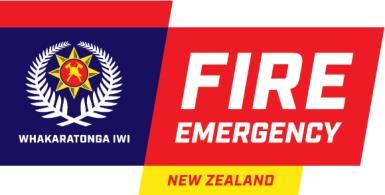 Rostering Protocols – Te Hiku District Relievers (D-Rel)
Problem Statement
Rostering Protocols – Te Hiku District Relievers (D-Rel)
Problem Statement
With the increase in establishment being worked on by the Staffing Working Group (as per
terms of settlement of CEA), it is expected that staffing levels will transition to above historic
establishment numbers before a national outcome is delivered.
ACT 1982
With the steady increase of D-Rel, there is a need to develop protocols that are fair and
consistent across Tamaki Makaurau to manage the rostering and well-being of D-Rel.
Attempts have been made to create an even spread of appointed D-Rel across the watches,
however it is inevitable that there will be occasions where there may be multiple D-Rel on
the same station and watch at any given time, which poses the question of who has priority
to be assigned to vacancies.
Our Approach to Rostering shifts
ESAs are the preferred guiding document where there is more than one D-Rel on a watc
INFORMATION h at
any one time.
o Priority is given to a D-Rel with the watch stated on their ESA at time of
appointment to D-Rel position. These staff will be given priority to vacancies
on the prescribed watch
o Where there is more than one D-Rel on the same watch, the priority is given
to the D-Rel who has their home station listed where the vacancy occurs.
o Where there is more than one D-Rel who have the same home station
recorded where the vacancy occurs; then the D-Rel with the most time and
rank has priority for the vacancy.
o
When a vacancy exists at a station that is not listed as the home station for
more than one D-Rel on the same watch; the D-Rel will be placed so as to minimise
travel time and costs, as is done now when allocating overtime shifts.”
This approach will be followed unless there are compelling and specific circumstances where this
approach is problematic. Deviation from this approach will be rare but may occur for operational or
personnel reasons.
Management/Reporting Lines for District Relievers
The respective Rosters Office will be required to manage the day-to-day rostering of D-Rel
to fill vacancies; and make all efforts to maintain MSS.
RELEASED UNDER THE OFFICIAL
The Personnel Portfolio Manager (PPM) or who is seconded at the time; is responsible for
managing Long Term Absences (LTA), and any leave requests of the D-Rel. It is important
that the PPM liaise with the Group Manager before any D-Rel is assigned to a station within
the Group Managers Group of stations.
1
20 December 2023
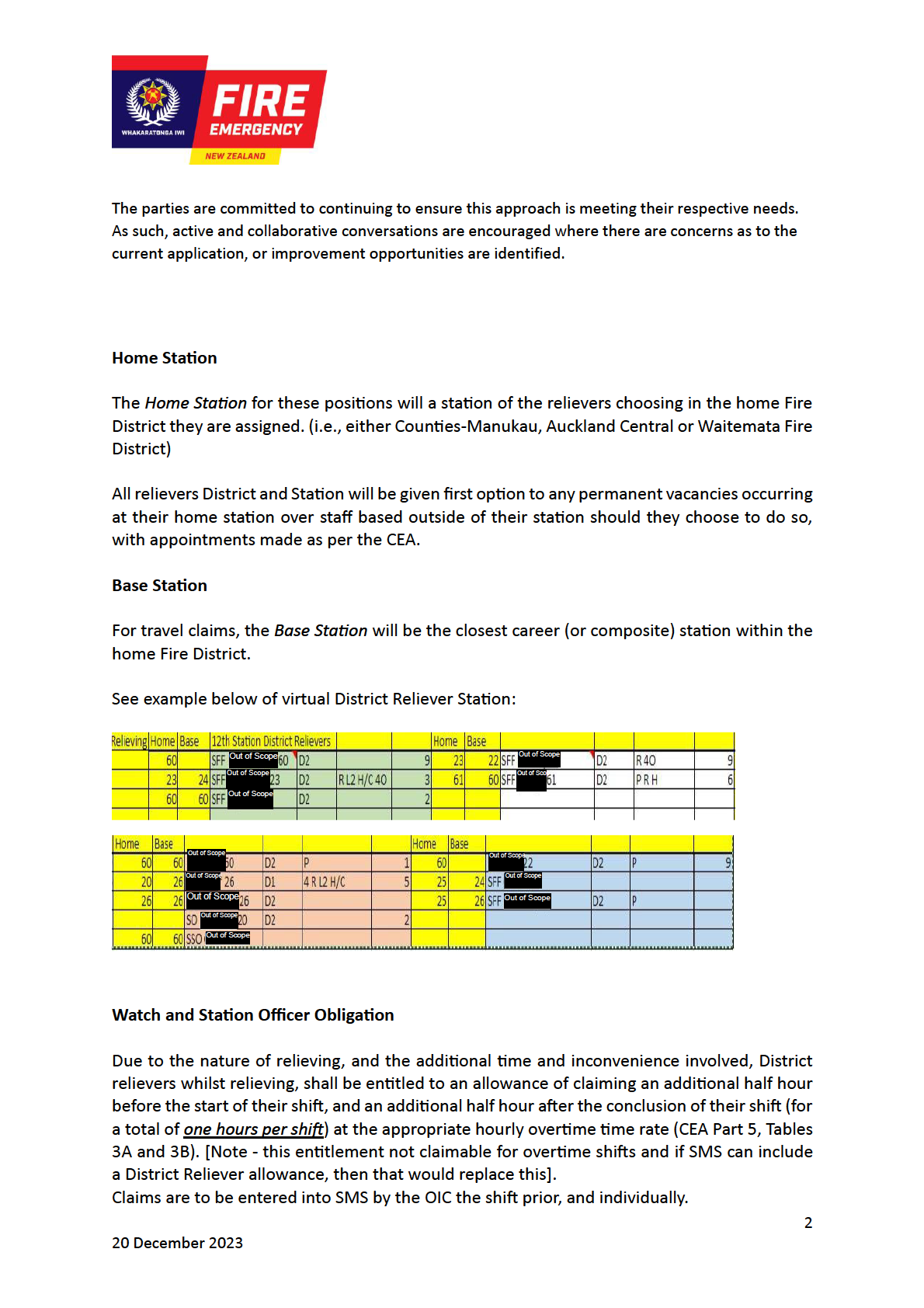
1982
ACT
INFORMATION
OFFICIAL
THE
UNDER
RELEASED
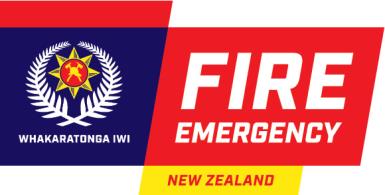
Note: OIC’s will need to use a flexible approach for pay claims that fall on the Friday day
shift immediately after pay cut off.
If a District Reliever books off sick/injured or other absence from any rostered shift, the
1982
above allowance is not claimable.
ACT
The parties (FENZ and NZPFU Local) acknowledge the collaborative work done to create this local
protocol to enhance fairness and consistency. Both parties recognise there may be opportunities to
refine and improve this document over the term of the agreement. Changes can only be made by
mutual agreement.
This Local protocol is published as an interim measure until such time as direction is given on the
outcome of the staffing working party and as such will be in place for two years. It will only be
extended by mutual agreement of both parties.
Next Review: 18 December 2025
INFORMATION
OFFICIAL
THE
UNDER
RELEASED
3
20 December 2023
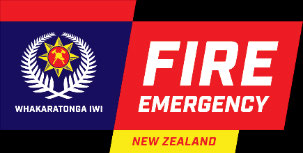 Local Agreement – Secondments
Procedure
Local Agreement – Secondments
Procedure
Short Term: - up to 6 months
1982
When to use
When a staff member accepts a secondment offer, their position (Station and
Watch) will be held open for six months or until the secondment ends,
ACT
whichever comes first.
Minor extensions (max three months and in consultation with the Auckland
Local) to a six-month secondment may be granted on a case by case basis that
will not impact on the ability for the staff member to return to their original
position.
Medium Term: - More than 6 months, but less than 2
years
INFORMATION
If the secondment is to be longer than six months but less than 2 years, then a
position in the staff member’s District will be held for them.
This local agreement is based on the initial release time frame.
If a secondment is to be longer than six months, the seconders position could be
filled either temporarily or full time in the usual manner.
OFFICIAL
On return from the secondment, if a vacancy in their District is not available., the
staff member may, by agreement, take up a temporary position in another
District until a vacancy becomes available in their own District.
THE
The District may impose an additional requirement that the return to the District
will be dependent on a position being available. This may include remaining on
the secondment.
If no vacancy exists in any District, the seconder could be carried over and above
UNDER
MSS in their Area or remain on secondment (at the expense of the seconded
positions BU).
If the returning staff member is away between six months and two years, the
vacancy in the Area which the staff member was seconded from, will be
advertised internally. They shall be given the vacant position generated by the
internally advertised vacancy.
RELEASED Long Term: - more than 2 years
If the returning staff member has been away longer than two years, they will be
offered a vacancy that is left over, following a full round of internal and across
Area (3, 4 & 5) transfers has been completed.
April 2021
1
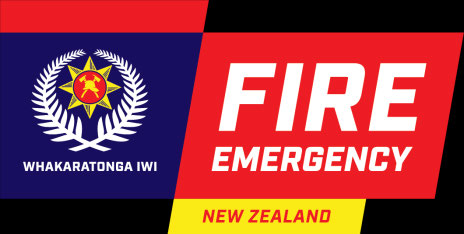
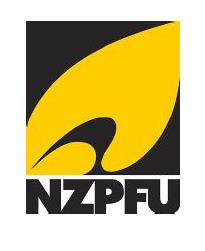 06/10/23
Station Preference Procedure
06/10/23
Station Preference Procedure
1982
When filling Officer and Firefighter vacancies in Districts 10, 15 & 20 the following
procedure should apply.
ACT
1. Internal District Station Vacancies
Vacancies for
Internal positions (within the District that the vacancy exists) will be
filled utilizing the Station preference process and recruit placement. Vacant
positions relate to the station only, however the preference form will ask for you to
include watches as part of your selection. [Link to Station Preference]
Candidates, from the District where the vacancies are advertised, will be the only
ones considered for any internal District station vacancies.
The station preference system will allow the filling of current vacancies, and then the
INFORMATION
cascaded vacancies that are subsequently generated. Therefore, staff should submit
a preference based on ALL stations in District they desire, even if no vacancy
currently exists. Many stations have operational requirements which override
service and rank.
With an agreed station preference system operating there is no requirement to
notify every vacancy as it arises. [CEA 5.6.3 section 1(ii)]. It is important to
OFFICIAL
understand that if a station preference form has not been submitted, staff will NOT
be considered for transfer to any position that subsequently becomes available
during the cascade. THE
Appointments will be selected by referring to Section 3, Criteria for Transfer or
Appointment 5.6.3 Collective Agreement.
Internal District station vacancies will normally be advertised
four times a year
UNDER
February, May, August and November.
Management reserve the right to advertise positions outside of these selected
months in consultation with the Local NZPFU Executive.
A local representative will be available to assist on the selection panel to provide
input into the ranking and selection process.
District Management also have the ability to reserve a station for a Recruit for
RELEASED
operational or management considerations.
Every attempt will be made to place existing staff at preferred stations unless there
are compelling operational or management considerations that dictate otherwise
Only those that apply will be eligible for movement.
2. Transfers across District 10, 15 and 20
Firefighters and Officers from Districts 10, 15 and 20 will be eligible for across District
transfers, including from those within the District where the vacancy exists.
The successful candidates will then be selected as per the Transfers and
1982
Appointment Policy in the CEA. [Section 3 Criteria for Transfer or Appointment 5.6.3
Collective Employment Agreement]
ACT
NOTE – staff applying for in-District vacancies will be treated equally with staff
from other Auckland Districts.
Across District vacancies will be advertised on the portal via a Regional Notice every
6 months (March and September) with the selection process as per the CEA. 5.6.3.
Applications will be for an advertised position and made on the Application for
Transfer form [link to standard transfer form].
New vacancies that occur between the close off of the previous internal District
transfers and the close off of the current across boundary transfers, will NOT be
INFORMATION
included in the round of across boundary transfers.
3. National Transfers for Firefighters
Once a year in October all firefighter vacancies across Districts 10, 15 and 20 will be
advertised to ALL staff
Nationally on the Portal Vacancy Notices and filled using the
selection process as per the CEA. 5.6.3.
OFFICIAL
Only vacancies left over from the previous round of across boundary transfers will be
advertised nationally.
THE
NOTE - Officer promotions continue to follow the National process.
4. Recruits
Recruits will normally graduate and be subsequently posted to stations throughout
UNDER
Districts 10, 15 and 20, four times a year, April, July, September and December.
District management reserve the right to tag recruits into suitable vacancies as they
arise as per the CEA. 5.6.3.
5. District Relievers
For consistency ‘Base station’ will be defined as the closest career (or composite) station
RELEASED
to their home within their District. Existing relievers will be grandfathered should they
wish to remain at their current stations. This means that relievers will be paid from their
“base station” for mileage rates and the greater of the prescribed travel time or the
actual time taken to travel to other stations.
6. Station Relievers
Station Relievers will have the closest station within their relieving cycle to their
home as their base station. Existing relievers will be grandfathered should they wish
to remain at their current stations. This means that relievers will be paid from their
“base station” for mileage rates and the greater of the prescribed travel time or the
actual time taken to travel to other stations.
1982
Spare Leave Cycles: When a Station Reliever is relieving on a spare leave cycle they
effectively become a District Reliever for the duration and can claim travel from the
closest career (or composite) station within the home Fire District. Also Station ACT
Relievers while relieving as District Relievers shall be entitled to claim an additional
half hour before the start of their shift, and an additional half hour at the conclusion
of their shift (for a total of one hours per shift ) at the appropriate hour overtime
rate (CEA Part 5, Tables 3A and 3B).
Note: They cannot change their AL group.
7. District Relievers/Station Relievers
District Relievers and Station Relievers will have first rights to any permanent position at
their home station over staff from outside their station. If there are two or more
Relievers at one station, then the person with the most appropriate skills; then most
INFORMATION
time in rank; will get the position.
8. Home and Base Station
Home Station is the station you are based at on SMS and defined by Management
on your employment status form (ESA).
Base Station for District Relievers is the closest career (or composite) Station to your
OFFICIAL
home within your District and for Station Relievers is the closest 24hr Station to your
home that you relieve at.
THE
9. SSO’s will encourage the movement of staff as part of their development,
particularly SO qualified SFF.
10. Compassionate and mutual transfers are not part of this procedure and will continue
to be considered on a case by case basis.
UNDER
11. Review
The parties acknowledge the collaborative work done to create a local protocol to
enhance fairness and consistency. Both parties recognise there may be opportunities to
refine and improve this document over the term of the agreement. Changes can be
made by [mutual agreement]. This procedure will be reviewed annually and will only be
extended by mutual agreement of both parties
RELEASED
Every effort has been made to achieve consistency with National CEA obligations and Policy.
However, where there are inconsistencies, National CEA obligations and policies prevail
FENZ
NZPFU
DM Out of Scope
, Chair Te Hiku Personnel
Terry Bird, Auckland Local President
Group
GM Out of Scope
(District 10)
Jeff Shrimpton, Vice President
GM Out of Scope
(District 15)
Martin Campbell, Secretary
GM Out of Scope
(District 20)
1982
ACT
Next Review Date: 18th December 2024
INFORMATION
OFFICIAL
THE
UNDER
RELEASED
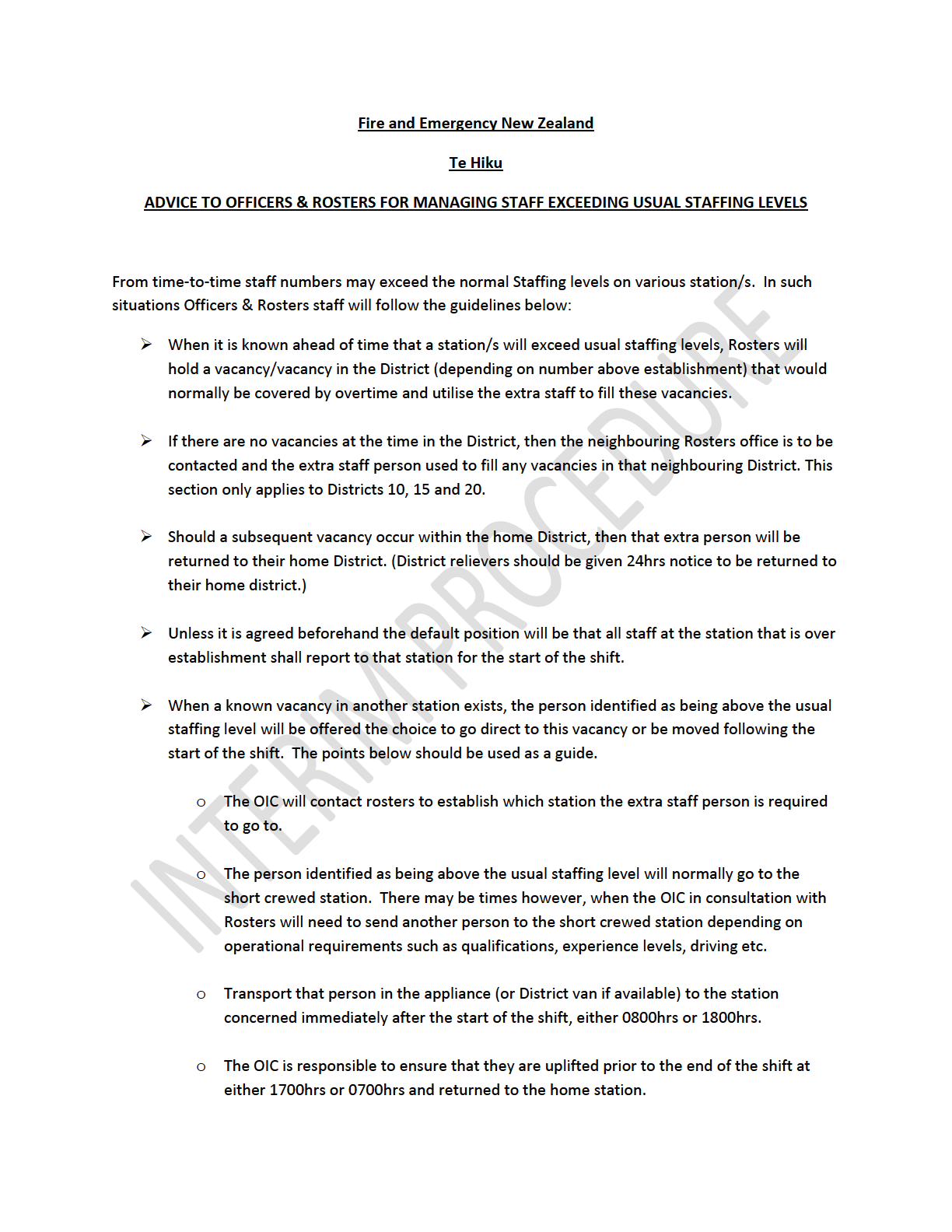
1982
ACT
INFORMATION
OFFICIAL
THE
UNDER
RELEASED
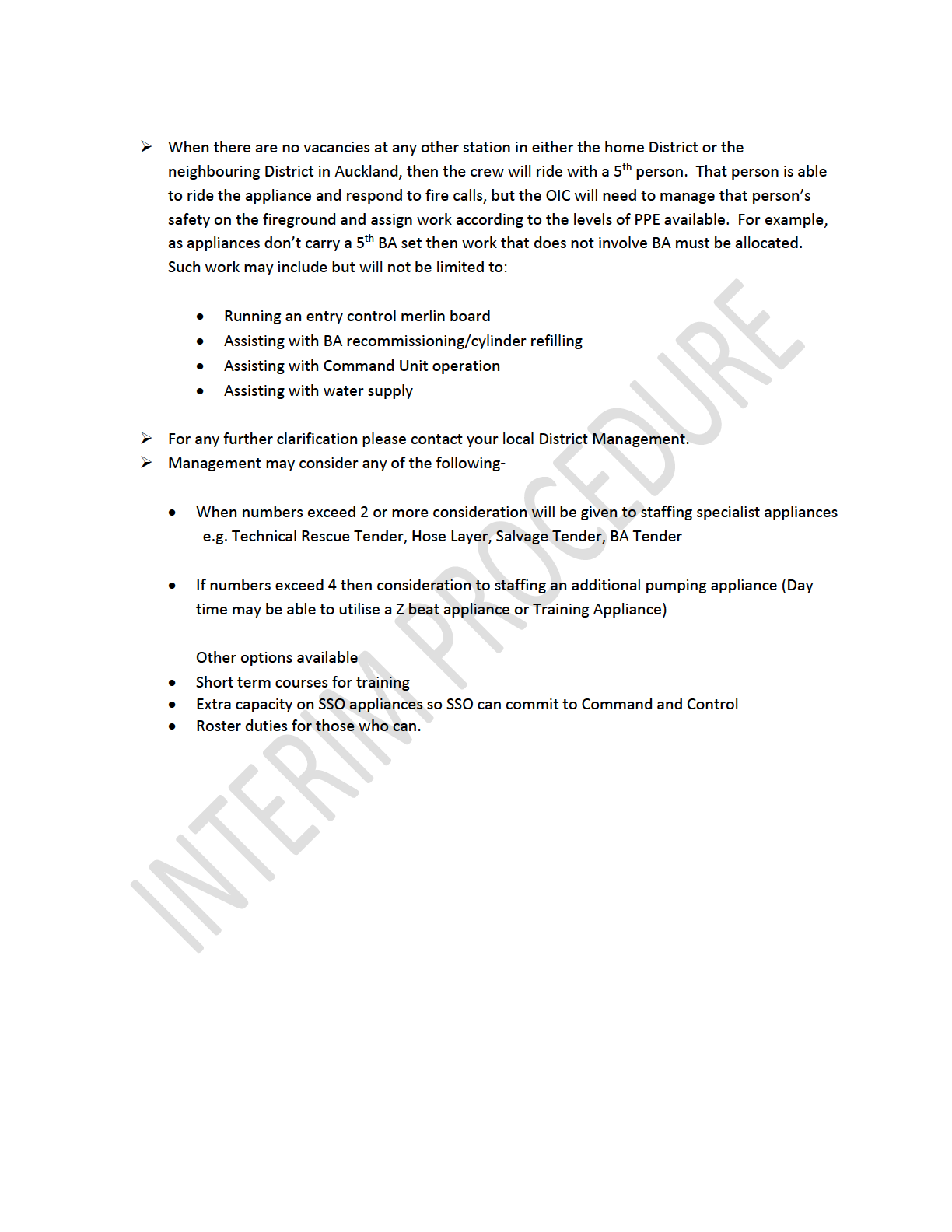
1982
ACT
INFORMATION
OFFICIAL
THE
UNDER
RELEASED

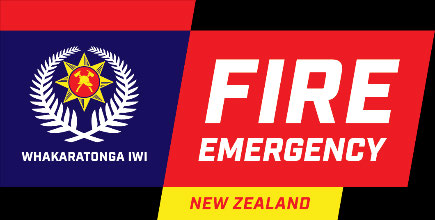
1982
ACT
INFORMATION
ROSTER POLICY
CHRISTCHURCH FIRE
OFFICIAL
BRIGADE THE
CANTERBURY DISTRICT
UNDER
RELEASED
1 | P a g e
Roster Policy Nov 22.docx Ver 3
General ........................................................................................................................................................... 4
Responsibility and Authority .............................................................................................................. 4
Brigade Roster Officer ........................................................................................................................ 4
Rosters - SMS...................................................................................................................................... 4
Pay Period .......................................................................................................................................... 4
1982
District Management Approval Required Instances .......................................................................... 4
Sick Leave ........................................................................................................................................................ 5
Sick Certified / NWA / WA .................................................................................................................. 5
ACT
Sick Non-Certified ............................................................................................................................... 5
Sickness on Duty ................................................................................................................................. 5
Sickness at Home ............................................................................................................................... 5
Annual leave after returning to work after extended absence .......................................................... 5
Sick Leave in relation to Annual and Long Service leave .................................................................... 5
Discretionary Leave ........................................................................................................................................ 6
Alternate STAT Holidays. .................................................................................................................... 6
INFORMATION
Stat Day Absence ............................................................................................................................... 7
Annual Service Leave .......................................................................................................................... 7
Deferred Annual Leave ....................................................................................................................... 7
Time Banking ...................................................................................................................................... 7
Overtime ......................................................................................................................................................... 8
OFFICIAL
Overtime complaints .......................................................................................................................... 8
Recording of overtime ........................................................................................................................ 8
New staff and averaging overtime .................................................................................................... 8
THE
Issuing of overtime: ............................................................................................................................ 8
Long term absences ........................................................................................................................... 8
POLHR6.10 Fatigue Management Policy ........................................................................................... 9
Text notifications ................................................................................................................................ 9
UNDER
Call backs ......................................................................................................................................... 10
Firefighter call-backs. ....................................................................................................................... 10
Officer Call-backs ............................................................................................................................. 10
Call backs whilst on ANL................................................................................................................... 10
SMS – Call Backs ............................................................................................................................... 10
RELEASED
Relieving Duties Travel ..................................................................................................................... 11
Callout .............................................................................................................................................. 13
2 | P a g e
Roster Policy Nov 22.docx Ver 3
SFF Riding in Charge ......................................................................................................................... 13
National Training Centre Overtime .................................................................................................. 13
Unable to cover absence .................................................................................................................. 13
Annual Leave ................................................................................................................................................ 14
Annual leave ..................................................................................................................................... 14
Moving ANL Leave ............................................................................................................................ 14
Annual Leave Accruing DIL ............................................................................................................... 14
1982
Minimum and Maximum Number of Personnel on Annual Leave ................................................... 14
PHR’s ................................................................................................................................................ 15
ACT
Personnel Excess Leave Plans ........................................................................................................... 15
Other Leave................................................................................................................................................... 15
Bereavement Leave .......................................................................................................................... 15
Jury Service Leave ............................................................................................................................. 15
Long Service Leave ........................................................................................................................... 15
Stand In ............................................................................................................................................ 15
Tactical Manning .......................................................................................................................................... 16
Officer Reliever ............................................................................................................................................. 16
INFORMATION
This document has been produced from a amalgamate of previous historical CFO/Area Commanders
Orders/procedures and roster notes and has been subject to a consultation process with the NZPFU
OFFICIAL
Christchurch Local. Any future amendments to this document will be in consultation with the NZPFU
Christchurch Local.
If any conflict arises from this document the provisions of the NZPFU Collective Agreement will take
THE
precedent.
UNDER
RELEASED
3 | P a g e
Roster Policy Nov 22.docx Ver 3
General
Responsibility and Authority
The Group Manager will provide oversight and audit on this policy and conduct payroll audits as per
policy HR 4.8
The Group Manager (Personnel) will also arrange for updates to personnel records on SMS to cover
transfers and promotions and will be responsible for pay claims sign off in SMS and ensuring these claims
are correct.
1982
The Christchurch City Station, Senior Station Officer on each watch will administer the watch roster on
behalf of the District Manager. The City Station Senior Station Officer from each watch will appoint a shift
Roster Officer (Station Officer) at any Station to oversee their respective watch roster staff. These Officers
have delegated authority to deal with shift roster issues to ensure the manning approved by the District
ACT
Manager for the District is both safe and operationally capable (Agreed MSM) and work closely with the
City Station Senior Station Officers and Brigade Roster Officer.
Brigade Roster Officer
The District Manager will appoint a Brigade Roster Officer to oversee all rostering within the four
operational watches. The Brigade Roster Officer will also assist District Management to conduct overtime
audits to ensure adherence to this policy and will be based and work at City Station.
Senior Station Officer Shane Cole is appointed Brigade Roster Officer until further notice.
INFORMATION
Rosters - SMS
Rosters staff report directly to their respective shift roster officers and are responsible for entering
absences into SMS and calling for and arranging replacements to maintain agreed MSM, creating and
maintaining an accurate parade state, entering riding positions and rotating staff through appliances to
maintain skill levels.
Pay Period
OFFICIAL
The normal Pay Period is closed off at
midday on the
Thursday before payday. All pay transactions need
to be entered before the pay period closes. Any additional claims should also be entered by this time.
THE
District Management Approval Required Instances
• Sickness at home greater than 2 days.
• Stand ins on public holiday’s and 1 day each side of the public holiday.
• Moving of PHR’s.
• Moving ANL Leave.
UNDER
• Bereavement Leave.
RELEASED
4 | P a g e
Roster Policy Nov 22.docx Ver 3
Sick Leave
Sick Certified / NWA / WA
Staff are reminded that when they return to work after a period of sick leave, NWA or WA they must on
their first shift back on duty provide District Management (NOT ROSTERS) with a doctor’s medical
certificate.
This paperwork is NOT to be left to Roster staff to do. It is the responsibility of the individual who has
been off duty, to provide such paperwork at the beginning of their first return shift.
1982
Sick Non-Certified
Personnel have an allowance of 5 sick non-certified days in a 12-month period.
A period longer than 2 days must have a certificate from their Doctor.
ACT
On return to work a SNC form is not required for 2 days or less.
Sickness on Duty
When personnel report sick to their OIC on duty, the On-Call Executive
MUST be contacted by the
personnel’s OIC before they are to leave the station. After consultation with the On-Call Executive a plan
to release the personnel will be decided. This policy does not preclude immediate 111 call for ambulance.
Sickness at Home
SAH must be applied for to District Management and is
NOT to be used for "planned events", as stated in
the collective agreement. Personnel need to notify District Management in a timely manner, of their
INFORMATION
intended absence, and then approval can be sought.
Rosters personnel cannot book personnel off duty on SAH for more than 2 days without District
Management approval.
Annual leave after returning to work after extended absence
Any outstanding annual leave that has been accrued whilst on an extended absence (Sickness, Accident
OFFICIAL
or Black Watch) will need to be taken at a time agreed to between the employee and District
Management. If a mutually agreeable time cannot be decided, then District Management will decide the
allocated time.
THE
Sick Leave in relation to Annual and Long Service leave
Where sickness or accident occurs whilst on leave, personnel
MUST provide a medical certificate for the
period of sickness, sick leave is debited in the normal manner. Personnel then take their entitled leave at
the earliest possible time in agreement with District Management. Personnel should as soon as practical
notify rosters.
UNDER
RELEASED
5 | P a g e
Roster Policy Nov 22.docx Ver 3
Discretionary Leave
Discretionary leave is provided for staff to have adequate time off work to allow for a good work/life
balance and will be approved subject to maintaining MSM.
Discretionary Leave is classed as: Alternative Stat Holiday
Alternative Stat Holiday Special Entitlement
Annual Service Leave
Deferred Annual Leave.
1982
Time Banked
ACT
All applications for discretionary leave MUST be submitted for approval by Rosters, no later the 14 days
prior to the leave starting.
All these leave types are required to be used within timeframes indicated below. If you wish to extend
any of these leave types – this requires an application for approval to District Management.
• Alternate Stat Day (ALT HOL STAT) – used within 24 months of accrual – or apply to cash In
• Alternate Stat Day Special Entitlement – used at employee’s discretion
• Annual Service Leave (ASL’s) – used within 12 months of accrual on the anniversary of joining – or
apply to cash in
•
INFORMATION
Deferred Annual Leave – used within 12 months of accrual
• Time banking (days and nights) – used within 12 months of accrual – or apply to cash in
• Public Holiday Refund (PHR’s) – used within 3 months of accrual (Moved once only)
Alternate STAT Holidays.
Alternate Stat Holidays are generated when personnel work a public holiday and/or the observed holiday
OFFICIAL
day. They are:
New Year’s Day and the day after
Waitangi Day
THE
Good Friday
Easter Monday
ANZAC Day
King’s Birthday
Matariki
UNDER
Labour Day
Canterbury Anniversary Day.
Christmas Day
Boxing Day
RELEASED
6 | P a g e
Roster Policy Nov 22.docx Ver 3
Stat Day Absence
A Stat day is a 24-hour period; therefore, you cannot use a stat day to take the day shift off before a
Public Holiday. However, changing the time off to a shift only [in SMS] you can use a, Service Holiday or
Time bank.
I.e. day 31st Dec to 1st Jan 24 hr period. Day shift can only be taken off as midnight on 1st Jan becomes
Public holiday.
Annual Service Leave
An annual entitlement of (3 days after 7 years' employment, a further 1 day a year after 14 years).
1982
Due on the anniversary of employee's engagement and
MUST be taken within the 12-month period they
fall due.
ACT
Deferred Annual Leave
Is allocated to staff who have been unable to take annual leave due to training, sickness or injury. This
must be taken within the 12-month period from allocation.
Time Banking
• A maximum of eight shifts can be accumulated.
• Only complete shifts can be time banked.
• Must be taken like for like, i.e. a banked night shift cannot be swapped for a day shift.
• Travel reimbursement is paid but not Travel time.
• Taken within 12 months or paid out at appropriate rate.
INFORMATION
• After 12 months if not used they will be deleted by SMS.
OFFICIAL
THE
UNDER
RELEASED
7 | P a g e
Roster Policy Nov 22.docx Ver 3
Overtime
Overtime complaints
The Brigade Roster Officer will examine any overtime complaints in the first instance. If no resolution can
be found, then it will be escalated to District Management and copied to the NZPFU Local.
Recording of overtime
The SMS overtime count will be reset to zero on the 1st of April each year.
1982
New staff and averaging overtime
The total number of call-backs worked for the applicable Brigade occupational group (FF/OFF) will be ACT
divided by the total number of staff in that Brigade occupational group (FF/OFF). The figure will be
rounded up to the next whole number.
Day and night call-backs will be calculated separately.
Long term absences
Due to changes in how staff are paid on NWA and WA, long term absences will be call-back averaged with their
Brigade Occupational group.
Staff who feel disadvantaged may apply for a review which will be decided on a case by case basis in
consultation with the local union.
INFORMATION
Personnel who are seconded or choose to transfer to Black Watch will re-enter the roster at the average
of that Brigade occupational group (FF/OFF) (excluding training courses).
Issuing of overtime:
Overtime will only be issued by Rosters Staff to maintain MSM.
No overtime is to be allocated to personnel while they are on Black Watch.
This includes two clear days
OFFICIAL
before and after training courses.
If any overtime position is unable to be filled, the On-Call Executive MUST be contacted.
THE
Where possible overtime should be rostered in advance to cover known shortfalls in the MSM and
vacancies should be allocated and entered in SMS at the earliest opportunity. Target to have the next 8
days allocated.
Call-backs are to be allocated to:
UNDER
• Personnel at the station where the vacancy occurs who are behind on SMS, unless personnel at
other stations are two or more call-backs behind
• Personnel rostered on relieving duties at the station where a call-back is required. (Relievers are
to be included in the list of people considered for the call-back.)
Whenever possible overtime to cover absences on statutory holiday is to be issued to minimise day in
lieu payments.
RELEASED
Personnel conducting overtime are not permitted to exceed the fatigue policy hours, as per below.
8 | P a g e
Roster Policy Nov 22.docx Ver 3
POLHR6.10 Fatigue Management Policy
All personnel are individually responsible for ensuring that they monitor their direct and additional
hours and comply with the limitations on hours of work contained in this policy.
Hours of work should not exceed 86 hours in a nine-day period.
• This nine-day period starts the first day before your set of 4 shifts and includes your 4 rostered
days off after your 4 shifts.
• Attached below is a table to assist in showing how the hours are calculated.
1982
Day
1
2
3
4
5
6
7
8
9
Rostered
X
D
D
N
N
X
X
X
X
Eg 1
D
N
N
ACT
Eg 2
D
N
D
To confirm and to avoid any confusion. You cannot do more than
3 Call backs t
otal over the period of the
day before your first shift, during your 4 shifts and the 4 days after your shifts.
• Approval to go outside of this policy can only be granted by the District Management
• Drivers are responsible for ensuring the driving hours regulations are not exceeded.
• While driving an exempt vehicle for a second shift is permissible, it should be avoided where
possible. (Approval required from On Call Executive)
INFORMATION
It is the responsibility of personnel allocated overtime to advise the Roster officer if they no longer want
the call back. Reasonable notice (at the commencement of the previous shift) should be given
whenever possible to enable the call back to be re-issued. This will be considered a refusal.
Note: If the shift either precedes or fol ows a rostered shift, then travel time is paid only one way, which is to or
from the call back section of the shift. (It is not paid between rostered and cal back shifts or vices versa)
OFFICIAL
Text notifications
The primary means of issuing overtime will be by e-text messaging.
THE
Any problems staff may have with their mobile phones or text messaging service provider are not the
responsibility of Rosters.
The following text notification guidelines are to be followed:
• Texting out, AMS or other communication for OT should be done between: 0800hrs & 1000hrs on the
first day shift.
NOT BEFORE 0800 hrs.
UNDER
• OT should be issued between: 0800hrs and 1800hrs on the second day shift. - Personnel given
the call back are to be notified by phone call.
• Personnel who do not have a cell phone are to be rung on their listed landline rather than notified
by text if due for the overtime.
• Short term overtime texting for shifts less than 24 hours out, will be messaged out and will be
issued after a 15 minutes delay
RELEASED
9 | P a g e
Roster Policy Nov 22.docx Ver 3
Call – Backs
Call-backs are currently offered on a no refusal basis by E Text. Personnel wishing to work on a given day
must reply within 24 hours of planned call-back texts to be considered for the Call-back or Overtime (OT).
A replacement list of accepted call-backs shall be kept on SMS and the call-back will be offered to the
person furthest behind.
Firefighter Call – Backs
Firefighter call-backs will be offered on the normal skills-based requirements of the position to be filled,
i.e. driver qualified etc. to the furthest person behind and will comply with the POLHRS.10 Fatigue
1982
Management Policy
Officer Call – Backs
ACT
Officer call-backs will be offered on a rank for rank basis in the first instance and will comply with the
POLHRS.10 Fatigue Management Policy
1. Expectation is to roster 3 substantive SSO’s on duty where possible. (SSO’s on annual leave,
and availability of call-backs may stop this occurring)
In order of priority:
2. SSO vacancy at City Station shall be filled by a substantive SSO, if not then a substantive SSO from an
outstation will be moved into City to cover the absence. If no substantive SSO is available to cover
this position, then contact the on-call executive to fill the vacancy.
3. SSO vacancy at Wigram Station shall be filled with a Substantive SSO in the first instance, a SSO
qualified SO in the second instance.
INFORMATION
4. The third SSO vacancy can be assigned to any other station where/if the SSO Station Manager
position is vacant.
5. If an SSO Qualified SO cannot fill the call-back, then an SO with two years’ experience in rank will
be offered the call-back. (Excluding City).
6. If a vacancy of an SO requires coverage, then it will be filled as below:
In order of priority:
• Substantive SO
•
OFFICIAL
SSO
• SO Qualified SFF
Call Backs whilst on ANL Leave
THE
Staff must not accept a call-back when on…
• If on a full LG ANL, you must not accept a call-back within the 14 days of leave. However, you can
accept on the four days prior to ANL start date and the
last two days before RTD
• If on a half LG ANL, you must not accept a call-back within the 7 days of leave. However, you can
accept on the four days prior to ANL start date and the
last day before RTD
UNDER
• If on Long Service Leave, Deferred Leave, public holiday, Alt Holiday stat, deferred leave.
• 2 days prior to and following a Black watch appointment- NTC courses.
SMS – Call Backs
SMS now displays any additional allowances which are automated by the System.
When an absence occurs in a Roster and a “Replacement” Firefighter is added to the Roster, SMS will
automatically identify any Meal or Overtime claims which are eligible under the CEA.
RELEASED
The call-back transaction is created and if either
Meal or Overtime allowances are applicable, these will
be visible in the call-back transaction (in the bracketed text).
10 | P a g e
Roster Policy Nov 22.docx Ver 3


In the examples below, the first call-back contains a 0.5 Overtime allowance, and in the second call-back,
both a Meal and a 0.5 Overtime are applicable.
Below are examples of what you will see when you add allowances.
1982
ACT
Meal Money.
For a normal OT on a Coloured Watch it is automatically generated by SMS.
• Manually pay one meal if shift extends longer than 1 hour, or if shift starts earlier than 1 hour
before normal start time (for Coloured Watch for 0700 start).
• When manually adding Meals Money please use the Comments box
• IE. Attendance at incident “F”. Greater than 4 hours.
• Attendance at Incident “F”. Over Meal Break.
INFORMATION
• No explanation needed for 0700 start
Relieving Higher duty.
Automatically generated by SMS.
No payment for SO relieving an SSO position at Substation if an SSO is on call back at that station.
FF and Officers relieving at other stations.
OFFICIAL
Pay Travel time and Travel reimbursement as below
Relieving Duties Travel
THE
Clause 2.6.15 states “where a worker is employed on relieving duties and is required to travel a
greater distance, because of such relieving duties, than to the usual station, such worker shall be paid traveling
time, at the appropriate hours rate, for the time taken to travel such
extra distance and such travelling
time shall be computed for each quarter hour or part thereof.”
The intent of this clause is to cover
EXTRA DISTANCE.
UNDER
You are not entitled to claim this travel if the relieving duties are being carried out at a station closer to
your home than your normal station. (You can claim for transporting your gear to and from your
relieving duties station).
Clause 2.6.15.1 states “Where a worker is employed on relieving duties under this clause and such a
worker is involved in
additional expenditure because of travelling, such extra distance, appropriate and
reasonable reimbursements for such additional expenditure shall be made by the FENZ.”
RELEASED
Clause 2.6.15.2 states “For the purpose of this sub clause, employed on relieving duties means where a
worker serves,
for any period, at a station other than such workers usual station.
11 | P a g e
Roster Policy Nov 22.docx Ver 3
Daylight Saving OT.
Paid for the extra hour worked on daylight saving, as 1.0. [you don’t lose an hour on the other change]
enter manually into SMS. Go to 0200hrs on the night shift, add extra hour, from drop down box choose
Daylight saving. Pay extra hour to shift swaps. (do not pay a meal for extra hour, it’s not past the end of
your shift.)
Roster Staff will generate.
• Callout payments
• Tradesperson allowance
• Additional Operational claims
1982
Call-backs - Travel Reimbursement (TR):
Paid to and from a call-back shift at any other station other than the person’s designated station,
ACT
regardless of the distance from the person’s residence.
When lodging operational travel km claims, the System will default the claim to a round trip from the
Employee’s home Station to the call-back Station and back again. There is no need to enter another
travel kms claim for reverse travel.
If the Employee is working a back-to-back call-back at the same Station, the Roster Administrator or
Station Officer should check the previous shift to assess whether a travel kms claim has already been
lodged. If the previous shift’s claim was a round trip, no allowance should be lodged in the second shift.
If, however, the Employee is travelling from, to and onto another Station (most likely applies to a
INFORMATION
reliever), make sure to select the ‘One Way’ checkbox, and lodge 2x claims (one for travelling to work and
one for travelling onto another Station at the conclusion of the shift).
Call backs - Travel time (TT):
Paid for travel to and from, if the call back shift is separate from the person’s rostered shift and is at other
than your usual station.
OFFICIAL
THE
UNDER
RELEASED
12 | P a g e
Roster Policy Nov 22.docx Ver 3
Callout
All Callouts are paid out as a 3-hour minimum (i.e. if the Callout was only 50 mins, the Employee will still
receive a 3-hour payment for the 50-minute claim).
If the Employee attends two Callouts within 3 hours, only one 3-hour Callout can be claimed.
If the Employee attends two Callouts which both commenced within the initial 3-hour window, but
concluded sometime after the 3-hour mark, record the residue hours by modifying the End Time of the 1st
Callout. Use the “Comment” field to capture information about both callouts.
1982
SFF Riding in Charge
For a SO qualified SFF to ride in charge on a day to day basis, the watch must be overmanned with ACT
firefighters. If the watch requires a SO call back, then a Qualified SFF off the same watch can ride in
charge. The exception to this is if an Officer cannot fill a call back vacancy, then a SO qualified SFF can fill
the call back.
National Training Centre Overtime
With the introduction of NTC now entering training course absences directly into SMS rosters, please
ensure the following process is applied wherever possible –
• All training vacancies should be covered by Overtime in the first instance – i.e.: FF away NTC –
filled with FF call-back – not the watch reliever – this is for cost recovery purposes – the OT is paid
INFORMATION
by NTC
• For those situations where this is not possible please email District Management when this
occurs.
Unable to cover absence
If staff of the required rank are unavailable to cover an absence, the priority order of replacement
issued by the District Manager will be followed.
OFFICIAL
Officer for Officer and then the SO qualified FF’s to ride up. Must be an SSO at City)
THE
A list of SSO qualified Station Officers and SO qualified Senior Fire-Fighters will be maintained.
Personnel qualified to act at a higher rank are indicated by an asterix (*) next to their name on the
Roster in SMS. First option is to ride up the SFF whose shift is working.
Any inquiries regarding the application of the overtime policy should be made to the Brigade Roster
Officer in the first instance. Issues can often be resolved at this point.
UNDER
RELEASED
13 | P a g e
Roster Policy Nov 22.docx Ver 3
Annual Leave
Annual leave
Leave is accumulated at 14 days every 160 days worked. Each Fire Fighter has an assigned leave group
(LG), numbered 1 to 10. Each Officer has an assigned LG numbered 1 to 10
Officers and FFs are to take their leave where it falls (every 160 days). Taking breaks away from the
workplace is important for your physical and psychological health and wellbeing.
1982
Moving ANL Leave
Note: Any staff member with more than 20 days’ discretionary leave will be unable to move their annual leave
ACT
to a vacant leave group position. All Annual leave changes must be approved by District Management.
(Definition of Discretionary Leave – Annual holiday special entitlement, service holiday, alt stat, and annual
deferred leave).
FFs and Officers may from time to time, move LGs, full or half by –
1. Swapping with other staff (within 10 LGs from you assigned LG)
2. Moving into an empty space (created by LTS / Injury, Leave or relievers approved by the District
Management
3. Annual leave can only be moved once, no further than 6 months from its original date. Leave changes
INFORMATION
further than 6 months out can be approved on a case by case basis by District Management.
4. Annual leave can be brought back no more than 2 months before its original start date to allow leave
groups to be combined, approval required from District Management.
5. Christmas/New Year leave ballot in half groups will only occur to fill the space created by personnel
moving out of the leave group. The ballot will be conditional on the personnel leaving the
Christmas/New Year leave not accruing a PHR in the leave group they move to.
OFFICIAL
6. Firefighters and Officers can do leave swaps with each other providing the minimum/maximum leave
group numbers are not exceeded.
7. When over staffed on Officers, there will be 2 Officers positioned on either 215 or 2518 providing
there are Firefighter vacancies.
THE
8. When over staffed on Firefighters, SO qualified SFF’s, will act up on acceptance providing there are
Officer vacancies.
9. All ANL applications to move ANL must be submitted for approval to District Management no
later than 14 days prior to the ANL starting.
UNDER
Annual Leave Accruing DIL
Annual leave cannot be moved onto a vacant leave space that accrues a Day in Lieu or PHR unless it is cost
neutral to FENZ and approved by District Management.
Minimum and Maximum Number of Personnel on Annual Leave
The minimum number of personnel off on leave at any one time:
3 Personnel
The maximum number of personnel off on leave at any one time:
4 Firefighters and 2 Officers
RELEASED
14 | P a g e
Roster Policy Nov 22.docx Ver 3
PHR’s
If personnel are on normal leave during a public holiday, they will have a public holiday refund
automatically generated in SMS, make sure they are aware that they may not return to duty until the
PHR’s have been taken.
Moving of a PHR can only be approved by District Management. PHR’s cannot be moved more than 3
months from their original date.
Personnel Excess Leave Plans
1982
Personnel who have had a leave plan put into place by District Management to reduce excess leave
cannot have rosters staff remove any leave loaded into without the permission of District Management.
ACT
Other Leave
Bereavement Leave
Apply to District Management for approval
Jury Service Leave
Apply for special leave from District Management
Day 1: Personnel report to Courts for Jury service, if required to serve notifies SSO of the watch, if not can
return home.
Day 2: Personnel report to Courts for Jury service, if required to serve notifies SSO of the watch, if not can
INFORMATION
return home. These notifications could be daily.
Note: If Personnel are on night shift immediately before the first day of jury service, release them on
coded Leave Jury Service, and replace.
Long Service Leave
OFFICIAL
Once you have completed 20 years total service you are entitled once only to a long service leave of 28
consecutive days and shall be taken within 8 years of entitlement falling due, at the District
Managements discretion. Failure to take LSL within 8 years will cause forfeiture of the LSL.
THE
Stand In
Must be cost neutral to FENZ, must be organised by the personnel wanting time off, signed by all parties.
The parties are
• Personnel seeking stand In.
• Personnel agreeing to stand In.
UNDER
All stand in applications for public holidays or shifts 24hrs each side of a public holiday must have District
Management approval.
RELEASED
15 | P a g e
Roster Policy Nov 22.docx Ver 3
Tactical Manning
For the intent of this instruction Station Officer or Senior Station Officer will include any Officer who is
appointed under section 25 of the Fire & Emergency New Zealand Act 2017 and its amendments.
City Station:
Each duty watch will have a Senior Station Officer, as OIC City Station on any duty day or night. Discretion
will sit with the on duty SSO to decide what appliance they ride dependent on parade states capability.
1982
City 217- at OIC City Stations discretion
City 214 - at OIC City Stations discretion
ACT
City 215 - at OIC City Stations discretion
Wigram Station:
Each duty watch can have a Senior Station Officer, SSO Qualified Station Officer, Station Officer or SO
Qualified Senior Firefighter on any duty day or night. Discretion will sit with the on duty Senior Officer to
decide what appliance they ride dependent on parade states capability.
Wigram 257 - Senior Station Officer, SSO Qualified Station Officer or Station Officer
Christchurch 2518 - at OIC Wigram Station discretion
INFORMATION
Note: (One Officer on Duty at Wigram
MUST have a minimum of two years in rank operational
experience)
Other Stations:
Redwood 231, Anzac 271, Ilam 261, Spreydon 221 & Woolston 241. – Senior Station Officer, Station
OFFICIAL
Officer or SO Qualified Senior Firefighter.
Exceptions to this instruction shall be at the approval of the Christchurch On-Call Duty Executive and in
THE
times of emergency situations such as task force deployments, availability crews, short term absences
during shift by officers and or no officers available for call back.
Wigram Operational Protocol:
It is required that all permanently Wigram based personnel will be ICU operators. The appliances will be
crewed on a rotational basis between the Wigram PRT appliance and the ICU. This rotation will include
UNDER
the Officers and will be administered by the on duty SSO at Wigram in conjunction with rosters staff.
In addition to the ICU crew positions a fifth Firefighter position will be based at Wigram. This position
would also have the requirement to be an ICU operator and when surplus to the manning requirements
at Wigram, would relieve where possible at Spreydon and Ilam stations, but the relieving requirement
may not be limited to these two stations.
This gives each watch on Wigram station a compliment of 1 x SSO, 1 x SO, 5 x Firefighters.
RELEASED
16 | P a g e
Roster Policy Nov 22.docx Ver 3
Officer/Firefighter Call-backs at Wigram:
In the event of an Officer/Firefighter vacancy at Wigram this vacancy is to be filled by a Command Unit
qualified call-back as per call-back policy and the incumbent personnel on the PRT should not to be
moved. If no qualified Command Unit personnel are available for call-back then existing personnel will
move from the PRT. Non-qualified Command Unit staff will not be rostered to the Command Unit
At Wigram Station in the absence of an on duty SSO, the Wigram based SO will be responsible for the
station functions and administration and will receive the vacant position RHD claim providing they are
1982
qualified to receive it (i.e. 2-years in rank of SO). This will not occur if the call-back is a Senior Station
Officer or Senior Station Officer Qualified Officer.
ACT
Christchurch 2518 operational capability maintenance:
As the Christchurch Command Unit is likely to be tasked for more significant long-term events and other
wider emergency management regional activities, it will be essential that we maintain adequate depth
and capability to crew this appliance. To ensure we have a greater consistent pool of command unit
operators and Officers we will refresh all current qualified officers and operators as well as those Staff
who wish to upskill’.
This will be managed in co-operation with the Command Unit trainers and their Wigram SSO.
Call back staff will refresh themselves at the start of each shift at the discretion of the SSO Wigram who is
INFORMATION
responsible to ensure that the appliance is operationally ready for deployment daily.
The role of the officer will centre on the duties of the Command Point Officer (CPO) and the need to
support tactical and strategic command structures at escalating incidents.
Relieving Higher Duties Allowances: For Command positions or Station Manager Positions:
OFFICIAL
Any Station Officer relieving in a Senior Station Officer position other than the Wigram situation
described above who has two years’ service in rank shall receive the RHD allowance.
As part of this relieving, the Station Officers should also be aware of the expectation that they should be
THE
prepared to display the necessary command and control functions of an SSO and ensure our
administrative and supervisory standards are maintained on shift to the level expected of this senior shift
position.
No more than 3 x Station Officer qualified Senior Firefighter staff will ride as OIC on appliances within
UNDER
Canterbury on any shift period. SSO City is responsible via Rosters to ensure this is managed Should
special circumstances exist any exceptions must have Duty Executive Officer approval.
Acting up rank Identification requirement:
Any Station Officer Qualified Firefighter or Senior Station Officer Qualified Station Officer who is acting up
either under temporary promotion or acting for any shift are to wear appropriate rank and Helmet for
that acting Officer rank to ensure recognition of position.
RELEASED
Staff who do not hold the required Station Officer/Senior Station Officer qualification will wear their
normal substantive rank.
17 | P a g e
Roster Policy Nov 22.docx Ver 3
Officer Reliever
1. The SO reliever will be the 11th Officer on the watch and assigned in SMS to the closest station to their
home.
2. The SO reliever will cover all Officers annual leave on their watch in the first instance. If unable to
achieve this, SO qualified SFF’s will act up on acceptance to keep annual leave cost neutral to FENZ.
3 When the City SSO is on annual leave the SO reliever may be required to cover the position of the
1982
outstation SSO that has moved into City for this period or any other vacancy.
4 When a Wigram Officer is on leave the reliever will be expected to ride the Command Unit for the
2 weeks while covering the annual leave unless the remaining Wigram Officer agrees otherwise. ACT
5 When no Officers are on leave the SO reliever would be expected to cover the day to day Officer
vacancies across the shift set as required.
6 When there are no Officer vacancies, the reliever would be expected to ride as the second Officer on
either 2518 and / or 215 as per the annual leave policy
7 The relieving Officer will be expected to be qualified on all appliances, if they are not at the time of
appointment priority will be given to achieve this in the first instance.
8 When a long-term absence presents on the watch for a SO vacancy the SO reliever will be given the
opportunity to fill the long-term absence first. The SO relieving position vacated will be filled by
INFORMATION
management with a seconded SFD to SO position.
9 The first filling of the watch SO reliever roll will be advertised to the current SO positions and
seconded SSO group and filled as per our vacancy and transfer policy and local agreements.
10 Any SO reliever is available to apply for any advertised SO vacancy.
11 As part of this agreement any new SO’s appointed to substantive positions within Canterbury
will have the reliever clause as part of the terms and conditions on employment if they are
OFFICIAL
appointed to the reliever role.
THE
UNDER
Out of Scope
M.Emerg.Mgt,PG. Dip Emerg.Mgt, G.Cert. Apl.Mgmt. MIFireE
Aaron McKay
District Manager / Commander
President
Canterbury Fire District
CHCH Local NZPFU
22 Nov 2022
22 Nov 2022
RELEASED
18 | P a g e
Roster Policy Nov 22.docx Ver 3
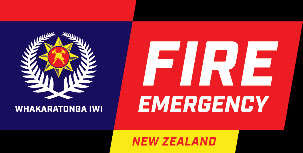 Canterbury Station Preference System
for Internal Firefighter & Officer Vacancies
Introduction
Canterbury Station Preference System
for Internal Firefighter & Officer Vacancies
Introduction
The CEA 1.21.8 requires that whenever vacancies or any new positions occur within service, not less
than 14 days' notice shall be posted inviting applications from the workers for the filling of such
vacancies and such applications shall receive full consideration.
1982
Furthermore, POL HR 2.14 Transfers, Notification of Vacancies and Appointment Policy, is to define
the steps to be taken, and the delegated authority levels required, when vacancies exist in
permanent Districts. The policy requires that multi-station district vacancies will be notified to ACT
personnel within the District in the first instance, to allow existing staff of the same rank to apply
for transfer to the vacancy in the first case.
The application of the 14-day requirement extends the timeframe to fill vacancies as the initial and
subsequent vacancies all require the 14 days' notice.
A Station Preference System allows personnel to indicate in advance their preferred stations
which subsequently reduces the period to fill vacancies.
District Vacancies
INFORMATION
When there is a vacancy at a career station within the Canterbury Fire District, the District
Manager/Commander may;
1. Designate it as a recruit vacancy, or
2. If required, fill the vacancy for valid operational reasons by directed transfer
[ref POL HR 2.14
s.5 Directed Transfers].
3. Fill the vacancy using the station preference system.
OFFICIAL
Where a vacancy remains unfilled using Station Preference System, it may be advertised nationally.
THE
Station Preference System
The Station Preference System has been developed in agreement with the Local NZPFU. With an
agreed station preference system operating the initial vacancy will be advertised, but it will not be
necessary to notify subsequent vacancies as they arise
UNDER
The intent is to;
• Meet the vacancy provisions contained with the Collective Employment Agreement (CEA)
• Ensure existing district career staff are provided with the opportunity to fill internal
vacancies, and any subsequent vacancies created.
• Shorten the timeframe to fill vacancies
Station Preference Guidelines
RELEASED
District Management will maintain a system to record the station preferences of all personnel.
Station preference can be updated at any time before the close off time as indicated in the initial
vacancy advertisement of each round, by emailing the District Personnel Executive.
Canterbury Station Preference System
V4 21.03.2023
Staff may record up to three station preferences in no particular order, to be eligible to be
considered for a vacancy.
Where a staff member has not submitted a station preference it is accepted that their current
station is their preference.
Staff should consider all career stations in the District as potentially having a vacancy.
Where a vacancy exists, staff who have not identified that position as a preference, will not be
considered.
1982
Should a vacancy be offered to the most eligible person, there is no compulsion to accept. If the
vacancy is declined, then it will be offered to the next eligible person.
ACT
Firefighters who have been posted to the Canterbury District post their recruit course, or as the
result of an out of district transfer, are not eligible to participate in the ‘Station Preference System’
for their first 12 months in the district.
Whereas the result of the station preference system staff change watch. They then under the
station preference cannot again change watch for a 12-month period.
Compassionate, mutual and directed transfers are not part of the Station Preference System and
will continue to be managed on a case by case basis.
INFORMATION
Selection Process
1. Vacancy exists and is not tagged for a recruit or filled by directed transfer.
2. Vacancy is advertised to all existing district career staff.
3. Station Preference database accessed to see if the vacancy is listed as a preference. This will be
prioritised to staff whose first preference matches the station vacancy.
4. Where more than one staff member has recorded the vacancy as a preference, selection will be
OFFICIAL
made as set out in Fire and Emergency Act 2017 S.26 (best suited) and CEA clause 5.6.3 Section 3
(criteria for Transfer or Appointment).
5. Staff member contacted to confirm transfer.
THE
6. Transfer notified via staff notice.
Disputes
Any dispute that arises will be in the first instance dealt with by the District Personnel Officer and
UNDER
local NZPFU input.
If this is not resolved the District Manager/Commander will work with the NZPFU Local Executive to
resolve the dispute.
References
Collective Agreement for Uniformed and Communications Centre Employees (CEA)
RELEASED
Roster Policy Christchurch Fire Brigade, Canterbury District Sept 21st 22.
POL HR 2.14 Transfers, Notifications of Vacancies & Appointments Policy Dec 2009.
Canterbury Station Preference System
V4 21.03.2023
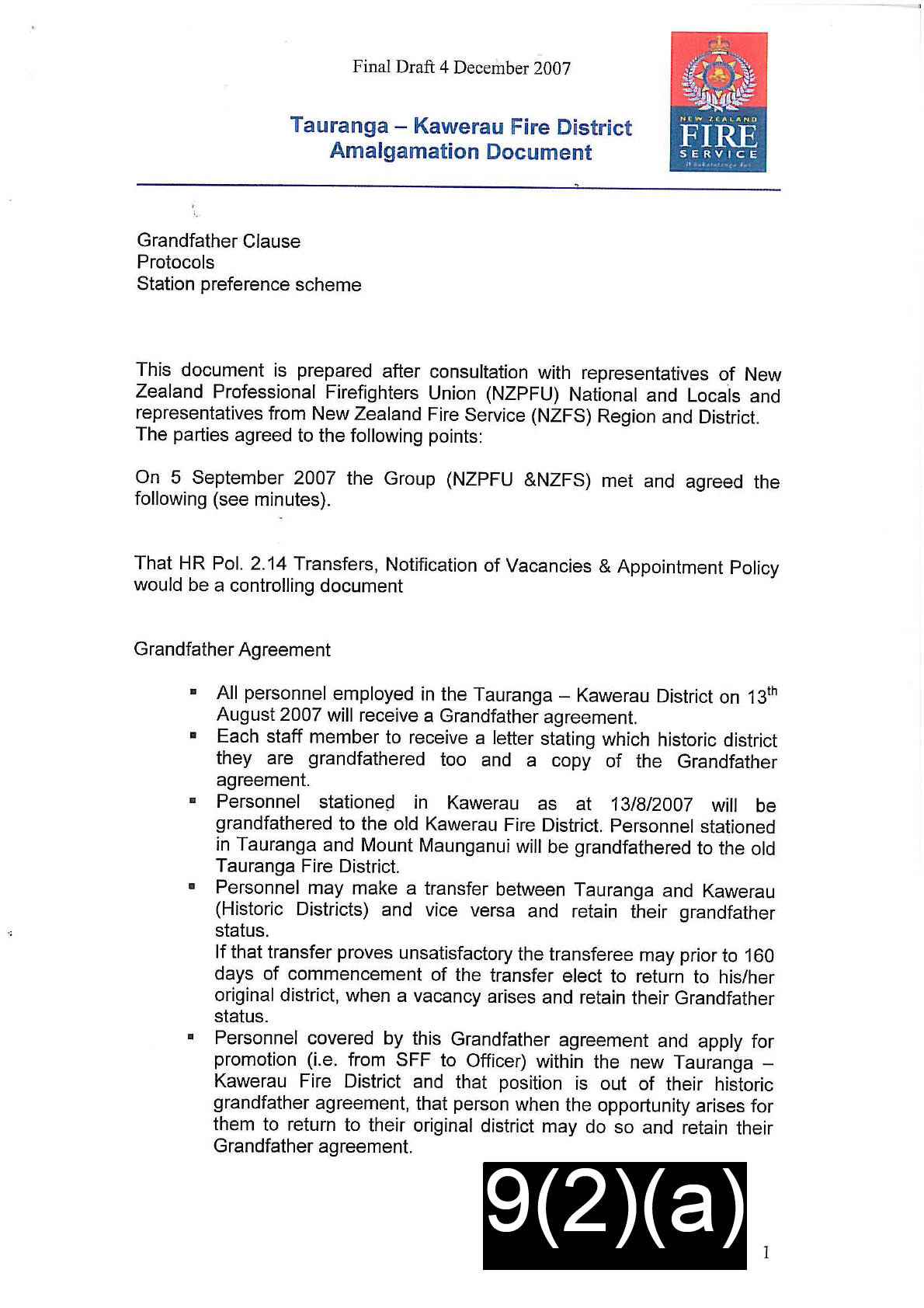
1982
ACT
INFORMATION
OFFICIAL
THE
UNDER
RELEASED
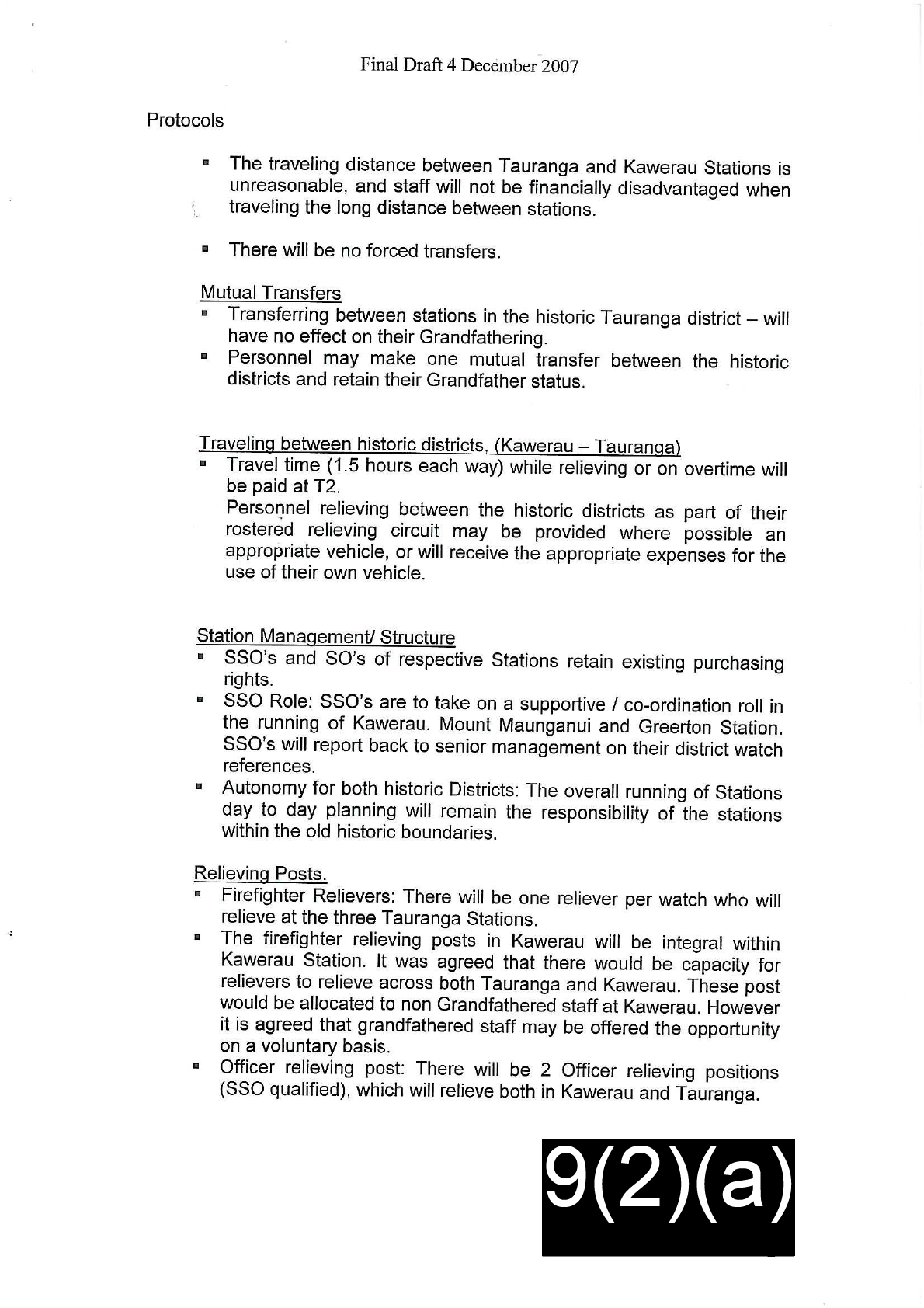
1982
ACT
INFORMATION
OFFICIAL
THE
UNDER
RELEASED
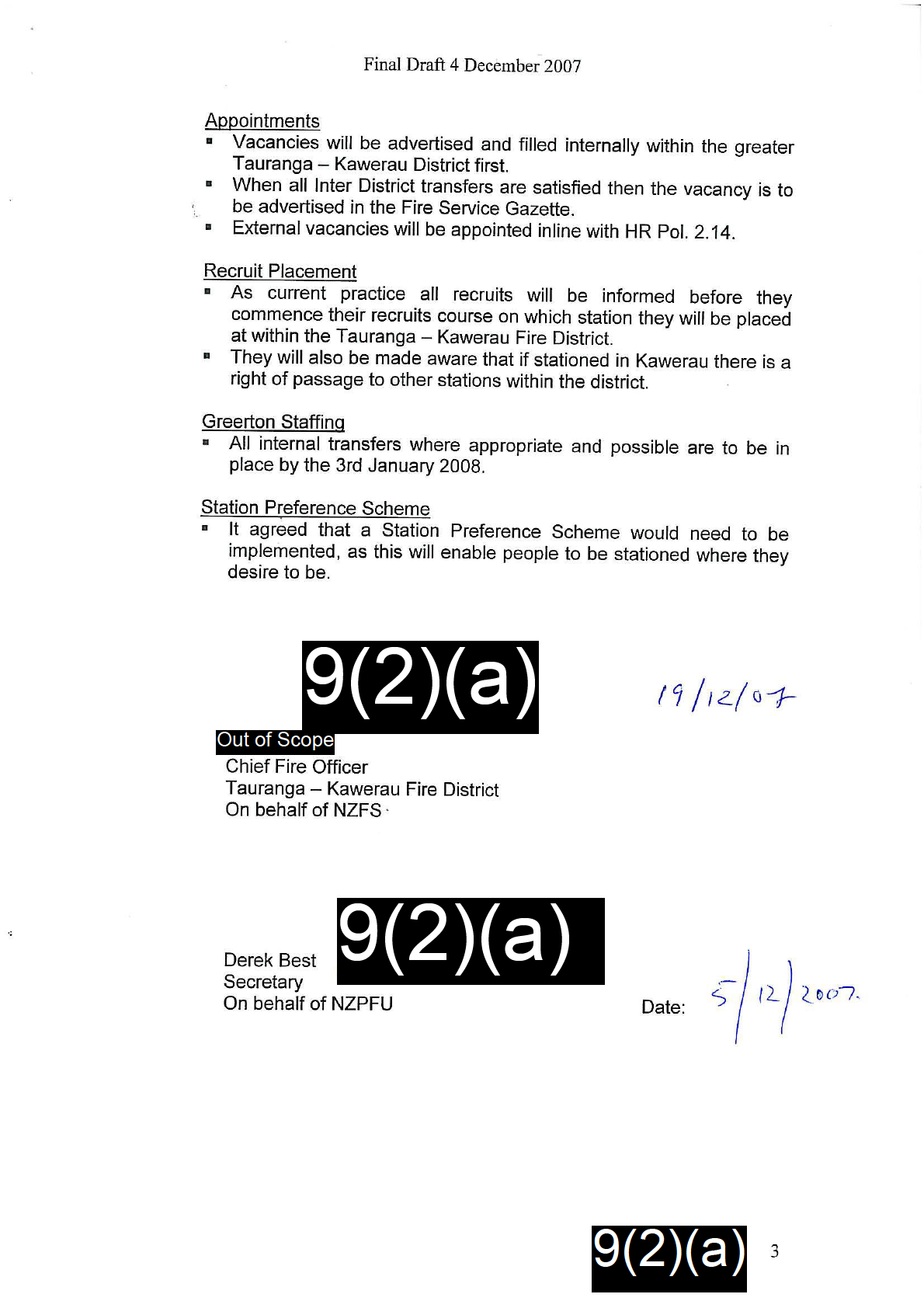
1982
ACT
INFORMATION
OFFICIAL
THE
UNDER
RELEASED
1982
Overtime Flow Charts
FF
SO
SSO
ACT
Off duty FF
Off duty SO
Off duty SSO
split shift options
split shift options
split shift options
FF from another station (within District)
On duty SFF (SO Qual) act up and replace FF
On duty SO qualified to act up
Off duty FF over FMP hours
Off duty SFF (SO Qual) act up
Off duty SO qualified to act up
Officer to act down
Off duty SSO act down
SSO from another station (within District)
FF from another station (within District) over FMP
SO (SSO Qual) from another station (within
INFORMATION
Officer from another station (within District)
Hours
District)
Officer to act down from another station (within
Local Officer over FMP Hours
Local SSO over FMP hours
District) over FMP Hours
Officer from another station (within District) over
Out of district OT request
Local SO (SSO Qual) over FMP hours
FMP hours
OFFICIAL
SSO from another station (within District) over
3rd shift off options
Out of district OT request
FMP hours
THE
SO (SSO Qual) from another station (within
Reduced crewing
3rd shift off options
District) over FMP hours
unqual SFF act up
Out of district OT request
All boxes shaded yellow must have GM approval
UNDER
3rd Shift Option
before used.
If a shift is over MSS, every effort must be made
Within 1.5 hours of the start of a shift the GM may
to used qualified on duty staff to act up before,
consider expidited options for more practical
Non Qual options
calling for OT
solutions
RELEASED
1982
Overtime Flow Charts
FF
SO
SSO
ACT
Off duty FF
Off duty SO
Off duty SSO
split shift options
split shift options
split shift options
FF from another station (within District)
On duty SFF (SO Qual) act up and replace FF
On duty SO qualified to act up
Off duty FF over FMP hours
Off duty SFF (SO Qual) act up
Off duty SO qualified to act up
Officer to act down
Off duty SSO act down
SSO from another station (within District)
FF from another station (within District) over FMP
SO (SSO Qual) from another station (within
INFORMATION
Officer from another station (within District)
Hours
District)
Officer to act down from another station (within
Local Officer over FMP Hours
Local SSO over FMP hours
District) over FMP Hours
Officer from another station (within District) over
Out of district OT request
Local SO (SSO Qual) over FMP hours
FMP hours
OFFICIAL
SSO from another station (within District) over
3rd shift off options
Out of district OT request
FMP hours
THE
SO (SSO Qual) from another station (within
Reduced crewing
3rd shift off options
District) over FMP hours
unqual SFF act up
Out of district OT request
All boxes shaded yellow must have GM approval
UNDER
3rd Shift Option
before used.
If a shift is over MSS, every effort must be made
Within 1.5 hours of the start of a shift the GM may
to used qualified on duty staff to act up before,
consider expidited options for more practical
Non Qual options
calling for OT
solutions
RELEASED
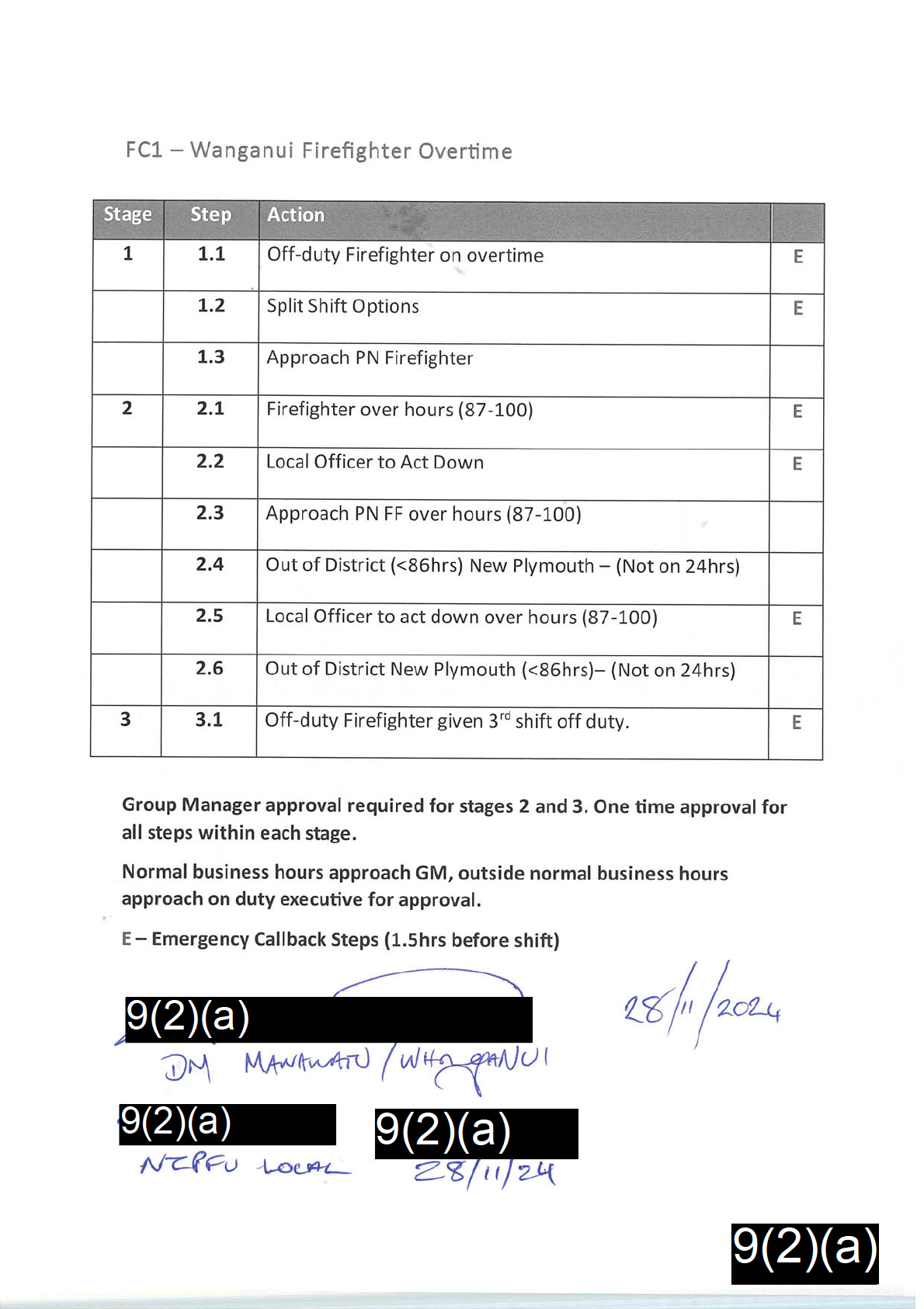
1982
ACT
INFORMATION
OFFICIAL
THE
UNDER
RELEASED
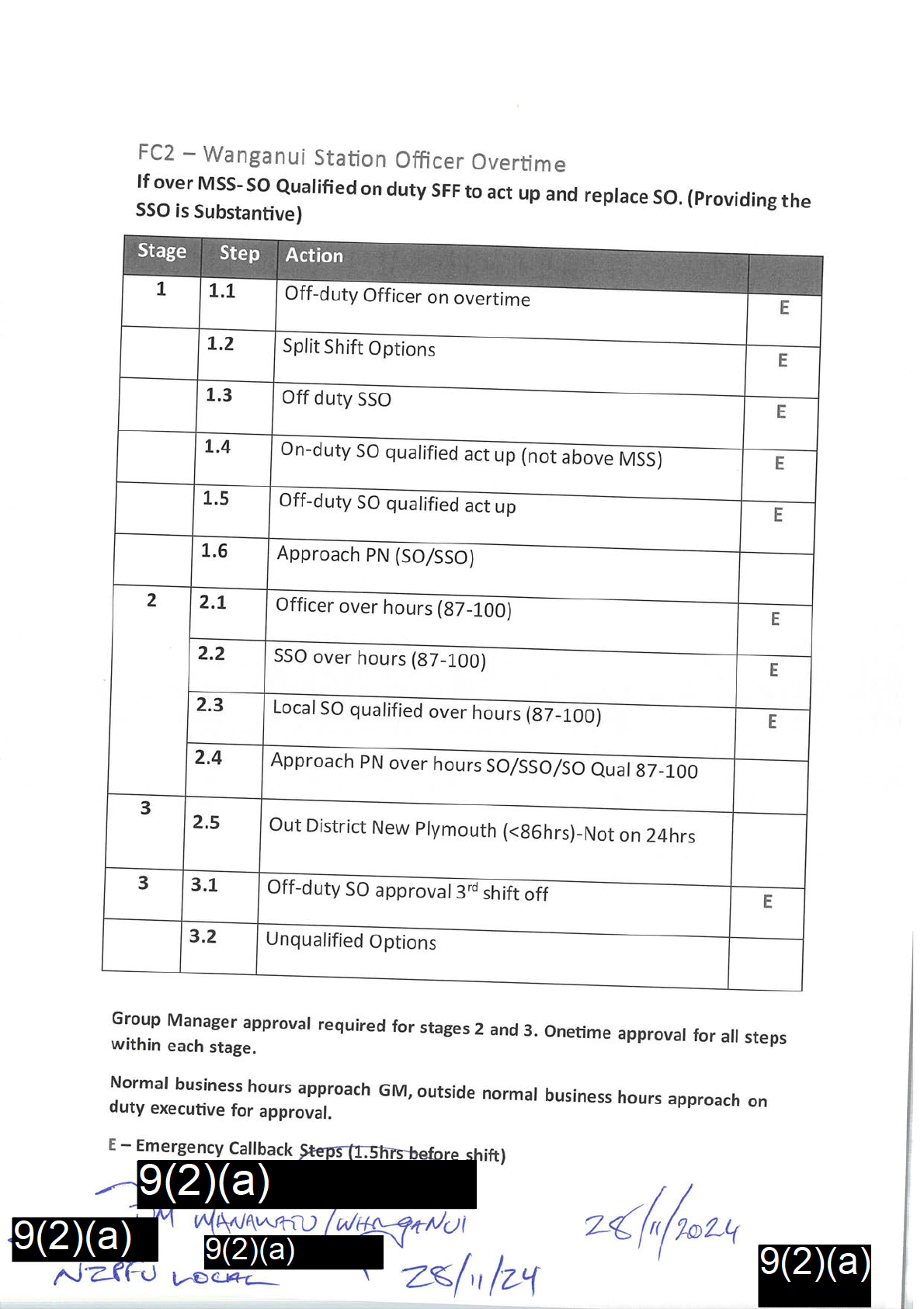
1982
ACT
INFORMATION
OFFICIAL
THE
UNDER
RELEASED
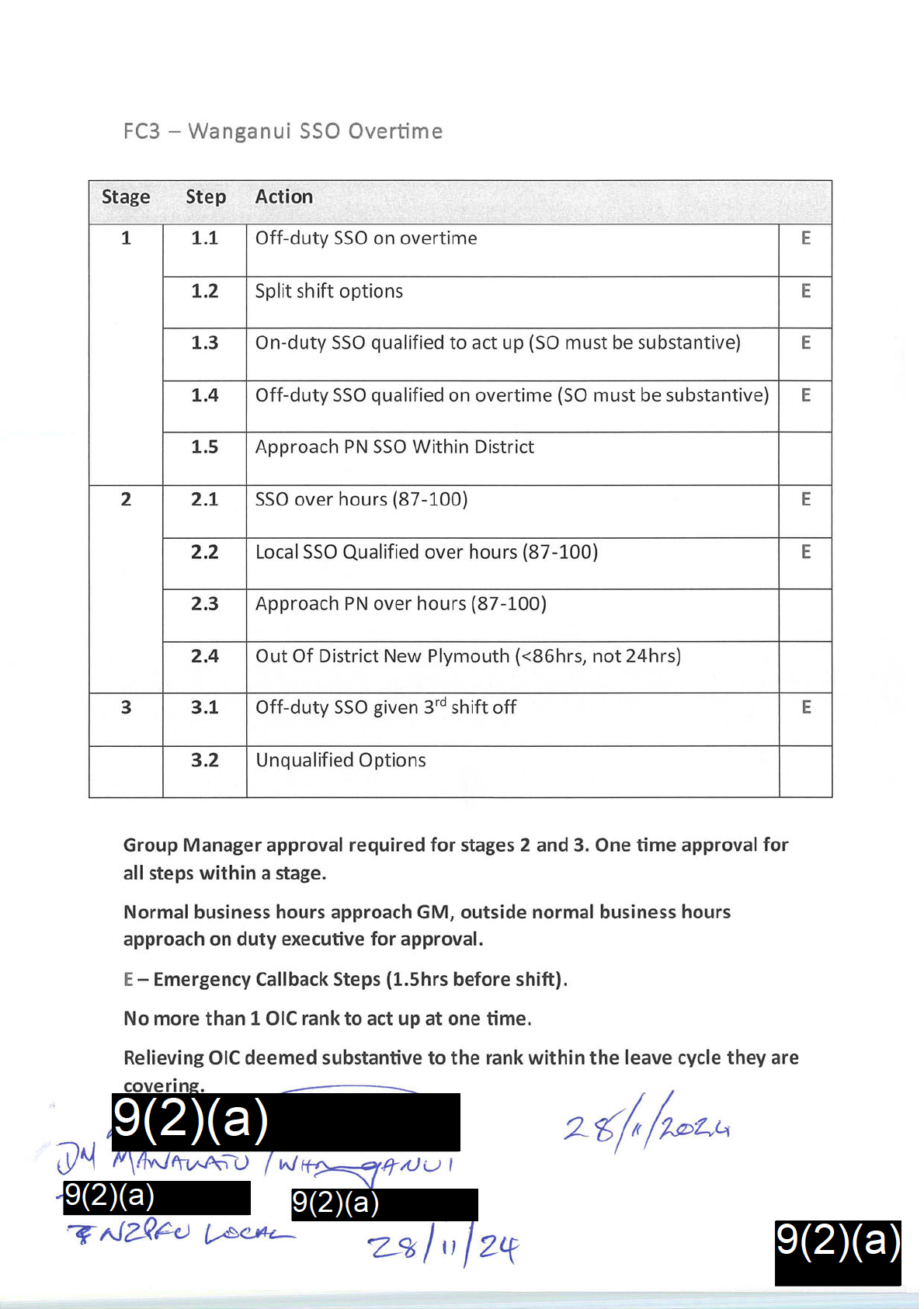
1982
ACT
INFORMATION
OFFICIAL
THE
UNDER
RELEASED
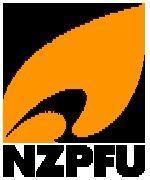 FIRE AND EMERGENCY NEW ZEALAND
NEW PLYMOUTH
BRIGADE PROCEDURES
BRIGADE PROCEDURE NO. 45
FIRE AND EMERGENCY NEW ZEALAND
NEW PLYMOUTH
BRIGADE PROCEDURES
BRIGADE PROCEDURE NO. 45
1982
OVERTIME
ACT
NEW PLYMOUTH TARANAKI DISTRICT
PERMANENT STAFF OVERTIME POLICY
1. STAFFING
1.1. The normal officer strength on each duty watch shall be one Senior Station Officer and one Station Officer.
1.2. Occupational classes shall be defined as Firefighter, Station Officer, Senior Station Officer.
INFORMATION
2. CALLBACKS
2.1. To ensure an even offering of callbacks, a log of days/nights shall be kept by the Rosters Dept. and allocation of
callback overtime shall be made to the person with the lowest days/nights (based on date of last OT given
date/oldest first) at time of allocation for the appropriate shift.
2.2. This will be subject to Driver requirements taking into account driving hours’ regulations and all NZPFU
OFFICIAL
supported national policies. If a Driver is required as per definition 7.1 rosters will follow up to
‘step 4’ in the flow
chart. If a driver is preferred as per definition 7.2 rosters will only go to
‘step 2’. Once the New Plymouth firefighter
overtime procedure flowchart has been completed, according to FL1 – 4 GD Driving hours guide, our obligations to
THE
consider other available drivers has been met. Copies of these are to be held at Rosters.
2.3. This policy is to be followed in conjunction with the CEA.
2.4. Callbacks will be issued when the operational strength on the watch falls below minimum shift manning.
2.5. The system to be followed when filling overtime shall be:
UNDER
• Rosters will send out an etext to all staff based on shift availability
chart 1 at or as close to 8:30am as
possible for any OT shifts within the next 14 days. Members will have until 10:10am that day to reply with a
“Yes” if they are available to work offered shift. Rosters staff will check responses after 10:10am. Issuing of
overtime to the eligible member with the lowest days/nights (based on date of last OT given date/oldest
first) will be done at 1:00pm. For OT
other than Short Notice or Emergency … That member will receive the
overtime and receive an etext to confirm stating which OT they have received, and they must acknowledge
they have received it via return text.
Short Notice and Emergency OT will be informed via phone call.
RELEASED
• If no “yes” response is received by 10:10am a further etext will be sent out under the ‘Freebie’ procedure
4.9 (step 2)
.
• If no “yes” response is received for the Freebie e-text, then rosters staff will send an e-text following
procedure 4.9.1 (step 3).
• If no cover can be found for a vacancy after following the policy, then rosters staff will use 4.9.2 Last Resort
procedure (step 4).
Updated Sept 24
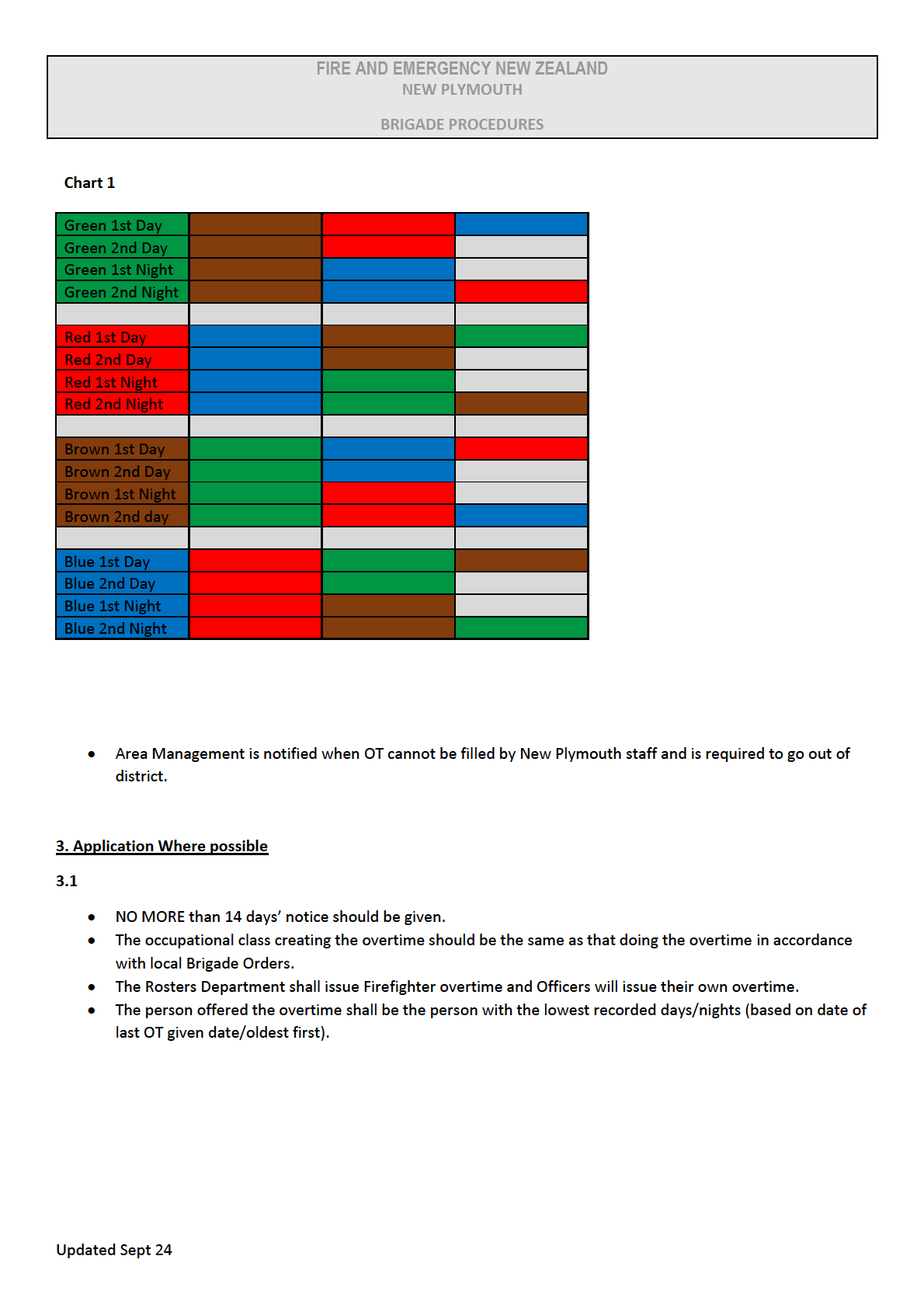
1982
ACT
INFORMATION
OFFICIAL
THE
UNDER
RELEASED
FIRE AND EMERGENCY NEW ZEALAND
NEW PLYMOUTH
BRIGADE PROCEDURES
4. Overtime Recording
1982
4.1 Only operational full shifts will be recorded. The following will not be recorded:
• Any callouts due to emergency incidents
• Any part shifts worked. e.g. called back to cover a Firefighter that has booked off sick. This is treated as an
ACT
emergency.
4.2 Recorded hours are to be the hours worked.
• Day Shift = +1
• Night Shift = +1
Days/nights will be put in SMS. This includes short notice days/nights.
4.3 Time Banked shifts will be recorded.
INFORMATION
4.4 The callback log: is recorded using the card system with all Firefighters having their own individual card. The
cards are to be accessible to all Firefighters at all times.
A
2-card system will be run for the firefighter rank group with each member having
a ‘freebie day’ and a ‘freebie
night’ card.
Freebie days/freebie nights will be recorded on the
appropriate card for any callback worked and offered
to the member with the lowest
freebie days/freebie nights first (based on date of last OT given date/oldest first).
Officers will record their own hours.
The call back log & SMS replacement entries will be maintained by the Rosters Dept for Firefighters. Only Rosters
OFFICIAL
Officer may amend SMS.
4.5 Zeroing of SMS and cards: SMS shall be zeroed annually along with the freebie cards (both day and night cards).
THE
This is to be done within the last week of March each year. Everyone’s day/night balance in SMS will be 5 which gives
rostering officer the ability to adjust everyone’s balances to allow freebies to work.
4.6 Cancelling an OT: A member may cancel an OT and will have the hours taken off SMS; unless they are getting
UNDER
paid for the callback. I.e. if you get paid for the callback the hours will remain in SMS. If cancelling happens within 7
days of the date of the overtime, the firefighter must arrange an OT give-away as a backstop, in case no cover can be
found.
4.7 Short notice overtime: When a callback is created and deemed to be short notice (refer to 4.7.1 on definition of
short notice) a time stamped etext will be sent out. Members will have 10 minutes to respond to text. If no “yes”
response is received after 10 minutes a second etext will be sent offering
freebie OT(day/night), and the ‘
freebie’
procedure (4.9) will be followed.
RELEASED
4.7.1 Definition Short Notice Overtime: “Short Notice” overtime is overtime that is commencing “
within 24 hours”
at time of filling the vacancy or
“will be within 24 hours if left until 8:30am on the next day shift”. Overtime shifts
commencing any further out are not short notice. This is defined from the time the e-text is sent out.
Updated Sept 24
FIRE AND EMERGENCY NEW ZEALAND
NEW PLYMOUTH
BRIGADE PROCEDURES
4.8 Emergency Overtime: “Emergency Overtime” is overtime that is created when a firefighter goes off duty during
the course of a shift, or within 2 hours of the shift starting. When this occurs a time stamped etext will be sent out.
Members will have 5 minutes to respond to text. The person receiving the overtime will be contacted by phone call.
If there are no responses phone calls will be made in order of SMS. Day/Night will not be booked against person
doing the Emergency Overtime (refer
4.1).
1982
4.9 Freebie procedure: Rosters staff will check for “yes” responses to a ‘
freebie’ etext (after 10 minutes for short
notice overtime, after 1:00pm that day for normal overtime) and the overtime will be issued to the eligible member
ACT
with the lowest
freebie days/
freebie nights (based on date of last OT given date/oldest first). The
freebie day/night card will be
filled out. Rosters staff will then inform the Rosters Officer via email to remove the day/night overtime
from the SMS overtime total of the member receiving the ‘
freebie’ overtime.
• If no “yes” response is received following a ‘Freebie’ etext, rosters staff will move to procedure 4.9.1 (step
3), then 4.9.2 Last Resort procedure (step 4).
4.9.1 OT on Shift swap: The preference is to avoid more than 24hrs on shift (Triple Shift) and excess of 86 to total
hours worked within a nine-day cycle (Fatigue management policy). To avoid, this consideration will be given to
covering a fire fighters ‘normal’ shift with over time allowing that Firefighter to work the required shift, before going
INFORMATION
to Red alert. If the firefighter is working an additional
day over their allotted hours, they will be booked off a
rostered day shift, and as would follow, if they were working an additional
night shift, they will be booked off a
‘rostered’ night shift, within their accumulative nine-day cycle.
Rostering staff will:
E-text out to cover the firefighters ‘rostered’ shift (both days, or both nights depending on which is required). If
responses are received for both day shifts or night shifts, then the ‘rostered off’ firefighter will be given the choice of
OFFICIAL
shift they would like ‘off’. If only one of the days, or nights receives a response, the firefighter gets no choice. If after
flow chart Step 2 no responses have been received: ‘Red Alert’ will be implemented allowing Fire fighter to go over
their 86-hour limit or consider a triple shift.
THE
4.9.2 Split Shift Red Alert: In the instance where a FF can do part of a Split Shift and the second part of Split Shift
cannot be filled, a Red Alert etext will be sent out for the second part of the Split Shift. If second part of Split Shift
cannot be filled under Red Alert, then a Red Alert whole shift will be considered
UNDER
4.9.3 Last Resort Procedure: Rosters staff will call all staff that could work the shift in order of the SMS starting at
the top of the SMS list of days/nights. If Firefighter cannot work or does not answer their phone the overtime will be
recorded against their name in SMS as a refusal. A firefighter that
works part of the shift e.g. split shift will not have
refusal added to SMS.
4.9.4 Exception to refusal (4.9.3): No refusal will be recorded for shifts offered –
a. on the day or night preceding or following shifts covered by approved leave applications of up to three (3)
consecutive days.
RELEASED
b. for the four (4) days preceding or following approved leave that covers a complete set of shifts.
c. for the four (4) days preceding or the two (2) days following annual leave (one (1) following half leave group)
d. for one day/night each year for a watch event agreed by each watch.
* for clarity you may choose to work above shifts but if you choose not to you will not be refused.
Updated Sept 24
FIRE AND EMERGENCY NEW ZEALAND
NEW PLYMOUTH
BRIGADE PROCEDURES
5. New Staff, Staff Returning To Work and Staff Relieving Higher Duties
5.1 48 Day Continuous Absence: “As per clause 5. Brigade procedure 45” Any operational firefighter who is off
operational duties from New Plymouth Station, for
any reason (black watch secondment, sickness etc. ) for 48 or
more consecutive days, shall be placed back into the cards as per clause
5.2 . This time frame shall be calculated 1982
from the SMS absence start and finish date.
Any disputes will be resolved/ decided upon by the Local Union Committee.
ACT
5.2 “As per clause 5. Brigade procedure 45”
New Staff will have their days/nights defined by the average value of the
Occupational Class they are joining.
5.3 If relieving higher duties (SO) for a substantial amount of time (ie has been temporarily appointed to the relieving
rank for a period of time) then OT days/nights issued while R.H.D. will be recorded on SMS. When the firefighter
returns to the firefighter rank, they will have any overtimes while R.H.D. added to their previous day/night balance in
SMS.
6. Filling Officer Overtime
If a call back cannot be filled in an officer vacancy the call back will then be issued according to the flow chart in
INFORMATION
brigade procedure 45.
When requiring a SFF SO Qualified to replace a Station Officer as overtime cover let the on
shift FF Rosters staff member know the shift requiring cover. The FF rosters staff member will send an e-txt to all
available SFF SO qualified personal and follow the FF card system to determine who is due and allocate as per the FF
e-txt overtime policy recording the shift, date and date issued on the FF ‘Freebie’ cards as per normal.
(a) This overtime where a fire fighter is acting up into an SO vacancy will be recorded as a NO HOURS overtime
on their card.
OFFICIAL
6.1 Officers filling FF position.
in this instance where an Officer is riding down and filling a FF vacancy overtime, this will be recorded as a NO
THE
HOURS overtime on SMS (officers will need to email OIC Rosters Officer so that their hours can be adjusted)
6.2 Overtime outside New Plymouth district
Where a member accepts an overtime outside the New Plymouth district, the overtime will be recorded on their
freebie cards.
UNDER
6.3 Union Shift swaps
When a Member of the New Plymouth Local is elected to the National Committee of the NZPFU and requires time
off for Union business that is not covered by the Fire Service, the following shall apply.
6.3.1 The National Committee Member notifies the rosters officer when they require time off. The rosters
staff arranges the stand-in. A record is emailed to the rosters officer by rosters staff.
RELEASED
6.3.2 The stand-in is not required to be repaid.
The member that did the stand-in does not get the hours for their next 2 equivalent (day/night) overtime
added to SMS. The member is responsible to notify the rosters officer to remove day/night from SMS.
Updated Sept 24
FIRE AND EMERGENCY NEW ZEALAND
NEW PLYMOUTH
BRIGADE PROCEDURES
7 Driver Fatigue:
Driver Fatigue: If when a driver indicates that s/he is unable to drive a consecutive shift due to fatigue.
(a) In the first instance the Officer of that appliance will drive to the incident. On arrival the Officer will resume
Officer duties and the Firefighter will assume pump operator duties.
1982
(b) Officer Fatigue: If the Officer of that appliance has also been on a previous shift and it also too fatigued to drive
and additional driver will be sought (See Driver Required
7.1 and 7.1.2). The crew will then ride ‘one over strength’.
ACT
7.1 Driver Required Definition:
When MSS shows only one driver rostered on (not including Officers) regardless of whether they will be driving a
second consecutive shift.
E-text over time issued will state ‘Driver required’
7.1.2 Driver Required process:
Rosters staff will follow Firefighter Overtime Flowchart up to and including ‘
Step 4’
7.2 Driver Preferred Definition:
INFORMATION
When the roster shows ample drivers but would result in one or both drivers driving a second consecutive shift.
E-text over time issued will state ‘Driver preferred’
N.B.
(a) ‘Fresh drivers’ and ‘non-drivers’ reply they are available- The fresh driver will be issued the Overtime regardless
of their place in SMS in comparison to the ‘non-driver’.
(b) No ‘fresh drivers’ reply they are available- On duty driver/s will be asked to drive a second consecutive shift. (See
OFFICIAL
Driver Fatigue
7).
7.2.2 Driver Preferred Process:
THE
Roster staff follow Firefighter Overtime Flowchart up to and including ‘
Step 2’
7.3 Bronto crewing for areal capabilities:
(a) Preferred: One Grade one driver and one grade TWO driver.
7.3.2 Minimum Bronto crew process:
UNDER
Roster staff follow Firefighter Overtime Flowchart up to and including ‘
Step 2’
8. Good will clauses:
Rostering staff will endeavour to make the appropriate over time allocations, however mistakes will occur, or
unforeseen absences arise.
In these cases:
RELEASED
(a) If the fault Is found within 7 days of the issuing of the OT, the suitably qualified personnel will be contacted
and issued the OT and the original recipient will be called and told they are not required.
(b) If the ‘suitably qualified personnel’ no longer wants the OT then it will go to the next suitable person on SMS,
and so on. If no suitably qualified personnel at the end of this process are available, then the original issuing
of the OT stands.
Updated Sept 24
FIRE AND EMERGENCY NEW ZEALAND
NEW PLYMOUTH
BRIGADE PROCEDURES
(c) If the fault Is found outside of 7 days of the issuing of the OT, and operational requirements are met the
issuing of the OT stands.
1982
9. Applying for leave within 7 days.
If a member applies for leave within 7 days and will require a callback to fill that vacancy- the member must be
ACT
aware that should the vacancy not be filled they will be required to work. If the member requires a shift off within 7
days, to ensure this can happen they may need to arrange another member to fill the vacancy (stand in back stop).
Rosters staff will then try to fill vacancy as per standard procedures.
ROSTERS Dept:
• Means those members of the Brigade who are assigned to the Rosters Dept as a reference. However, it will
also include any Firefighter that is assigned the job of finding a replacement by the Duty OIC if no Rosters
staff are available.
INFORMATION
ALL MEMBERS ARE RESPONSIBLE FOR ADHERING WITH THIS POLICY. THE WATCH OIC IS TO ENSURE ROSTERS
STAFF FOLLOW THIS POLICY. ANY ISSUES ARE TO BE BROUGHT TO THE ATTENTION OF THE LOCAL EXECUTIVE.
OFFICIAL
THE
UNDER
RELEASED
Updated Sept 24



 FIRE AND EMERGENCY NEW ZEALAND
NEW PLYMOUTH
BRIGADE PROCEDURES
Firefighter Overtime Flowchart
FIRE AND EMERGENCY NEW ZEALAND
NEW PLYMOUTH
BRIGADE PROCEDURES
Firefighter Overtime Flowchart
1982
Step 1: Off duty FF callback
ACT
Advise if available
to split shift when
Step 2: FF No Hours/split shift/Officers
turning down OT.
INFORMATION
Step 3: Last resort procedure (refusal)
OFFICIAL
THE
Step 4: FF Whanganui FF callback
UNDER
Step 5- GM/duty exec options for approval
RELEASED
Fatigue management
Shift swap on overtime
Updated Sept 24
FIRE AND EMERGENCY NEW ZEALAND
NEW PLYMOUTH
BRIGADE PROCEDURES
Station Officer overtime flowchart
Step 1: Off duty SO callback
1982
ACT
Advise if available to
Step 2:SO Double Shift on
split shift when
OT
turning down OT.
Step 3:SO Split Shift
INFORMATION
Step 4: Substantive SSO
Step 5: On-duty SFF (SO
OFFICIAL
qualified) to act up. Call back
FF on OT
THE
Step 6: Off-duty SFF (SO
qualified) on OT
UNDER
Step 7: Whanganui SO/ SSO
Step 8: GM/duty exec options for approval
RELEASED
Fatigue management
Shift swap on overtime
SFF (Not SO Qualified) on shift to ride in charge
(Based on time in rank or by agreement)
Updated Sept 24
FIRE AND EMERGENCY NEW ZEALAND
NEW PLYMOUTH
BRIGADE PROCEDURES
Senior Station Officer overtime flowchart
Step 1: Off duty SSO
1982
Advise if available to
split shift when turning
Step 2: SSO Double Shift on
ACT
down OT.
Step 3: SSO Split
Step 4: SSO Qualified SO
on Duty to act up
INFORMATION
Step 5: SSO Qualified SO
off Duty to act up
OFFICIAL
THE
Step 6: Substantive SO on duty to act up. Callback SO on OT
Step 7: Whanganui Officer SSO/ SO
UNDER
Step 8: GM/duty exec options for
approval
RELEASED
Fatigue Management
Shift swap on overtime
Updated Sept 24
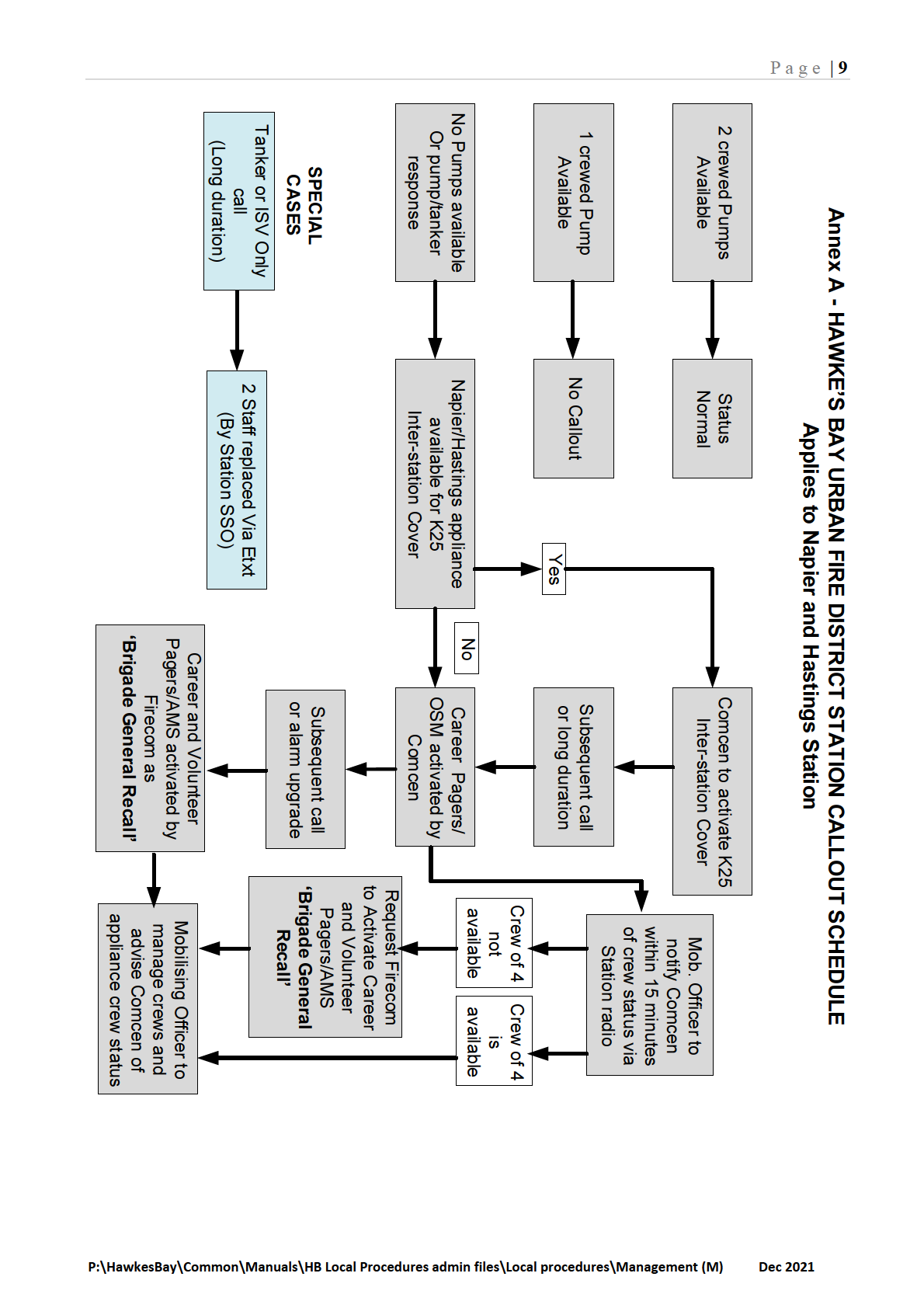
1982
ACT
INFORMATION
OFFICIAL
THE
UNDER
RELEASED
Area 16 Recruit Rotation Policy (condensed)
The purpose of this document is to set out in a condensed format the salient points of
how, the area will manage recruit firefighters to enable them to obtain a range of
experience in their first 18 months, while still maintaining operational capability and a
balance of skills and experience on watches.
• Recruit FF position identified on a watch.
• Recruit FF placed in that position for approximately 6 months and allocated an
1982
ANL slot
• After the initial period the recruit FF will be placed on the same coloured
watch at another station within that station zone.
ACT
This will mean that an existing FF at that station (normally a non-driver) will be required to transfer
to the station the recruit FF came from.
• The transfer will be for a fixed period of time with a start and end date.
• They will were possible keep their allocated ANL slot
• Travel can be claimed for the first 14 days of the transfer and the first 14 days
when they return to the station they came from.
• They will return to the station they came from
• The reliever will maintain their normal reliving circuit
The same process outlined
above would be followed for the 3rd recruit FF rotation (in the case of a 3
INFORMATION
station zone)
• At the end of the recruit FF 2 or 3 station rotation, they would return to the
original station where the original vacancy existed. This will become their
home station.
• The rotation process will managed within the relevant zone by the SSO
• Transfers will be managed by area executives.
OFFICIAL
For a more in depth understanding of how area will manage recruit rotation and staff
to provide development and operational capability read the full document here.
[insert hyperlink]
THE
UNDER
RELEASED
December 2017
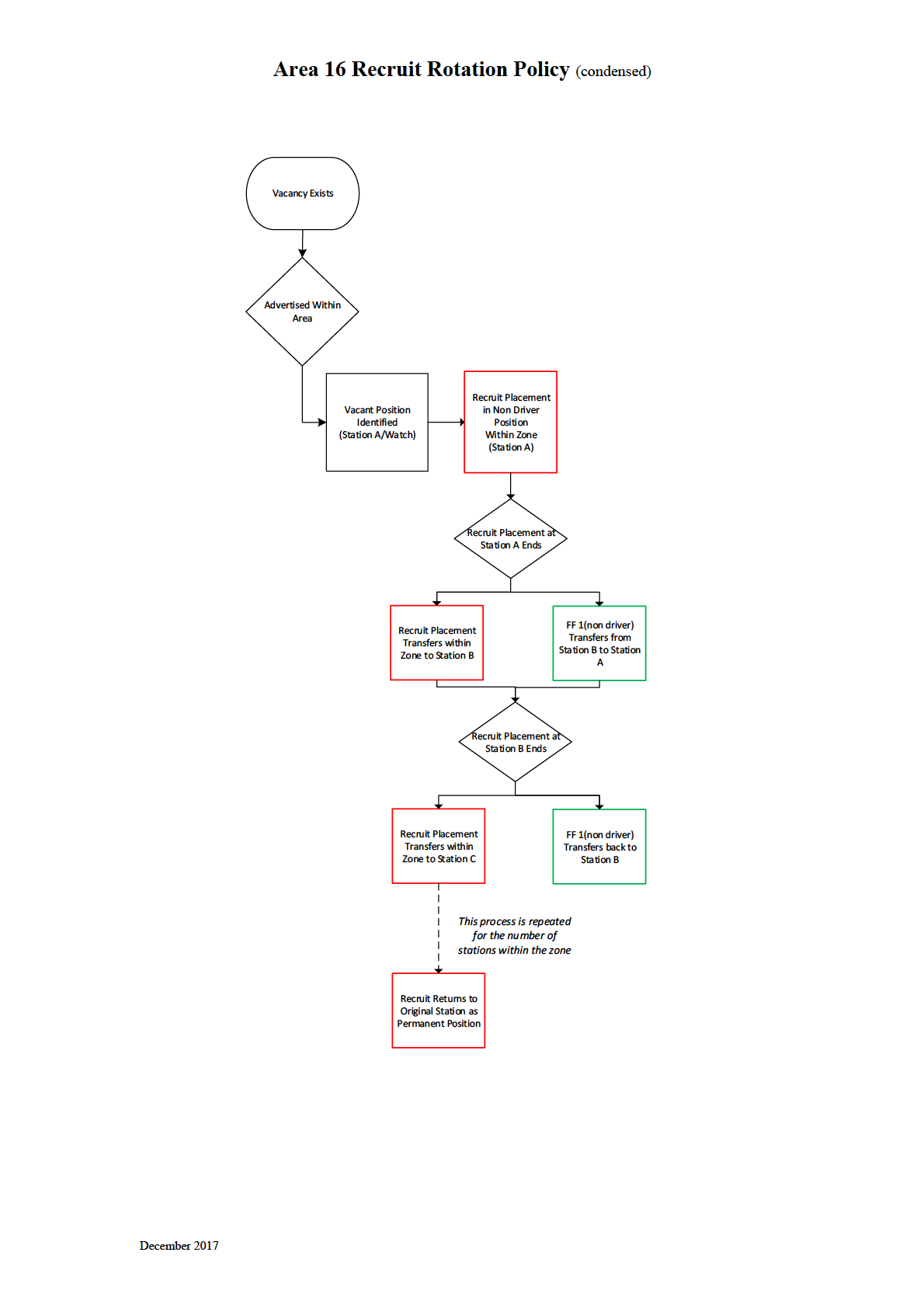
1982
ACT
INFORMATION
OFFICIAL
THE
UNDER
RELEASED
Station Preference for
Internal Firefighter and Officer Vacancies
Preference Process
1982
If you are happy with your current station, then you do not need to specify a station preference.
All staff who want to be considered for movement to stations within Wellington District are to
complete the Wellington Internal District Preference Form and choose up to
three station
ACT
preferences.
Vacant positions relate to the station only. There is also the option to show
preference for a reliever position.
This process will be conducted using the currently grandfathered boundaries of the former Areas 15
(Hutt-Wairarapa) and 16 (Wellington). This does not include Paraparaumu or Masterton Stations.
The preference system will fill current vacancies, and then any further vacancies as they generate.
To avoid any doubt, all staff should consider all career stations in the district as potentially having a
vacancy.
With an agreed station preference system operating, it will not be necessary to notify every vacancy
as it arises, as stated in CEA 5.6.3 section 1 ii.
INFORMATION
During this process, current vacancies will be cascaded: if a station preference form has not been
submitted, staff will not be considered for a vacancy that becomes available.
Please send your attached internal district preference form to
[email address].
Any emailed forms will be acknowledged. If you do not receive acknowledgment, it is your
responsibility to follow it up.
OFFICIAL
The station preference is a “live” document for use by district management; you will have the
opportunity to update it throughout the year. This process will be reset and repeated at least
THE
annually.
In agreement with the Wellington NZPFU Local and in the spirit of transparency, a NZPFU Local
station preference representative will be kept informed of the selection process.
Disputes Process
UNDER
Any dispute with the process or a transfer must be first taken to your officer, then to your local
NZPFU Dispute station preference representative, and then to your group manager.
RELEASED


























